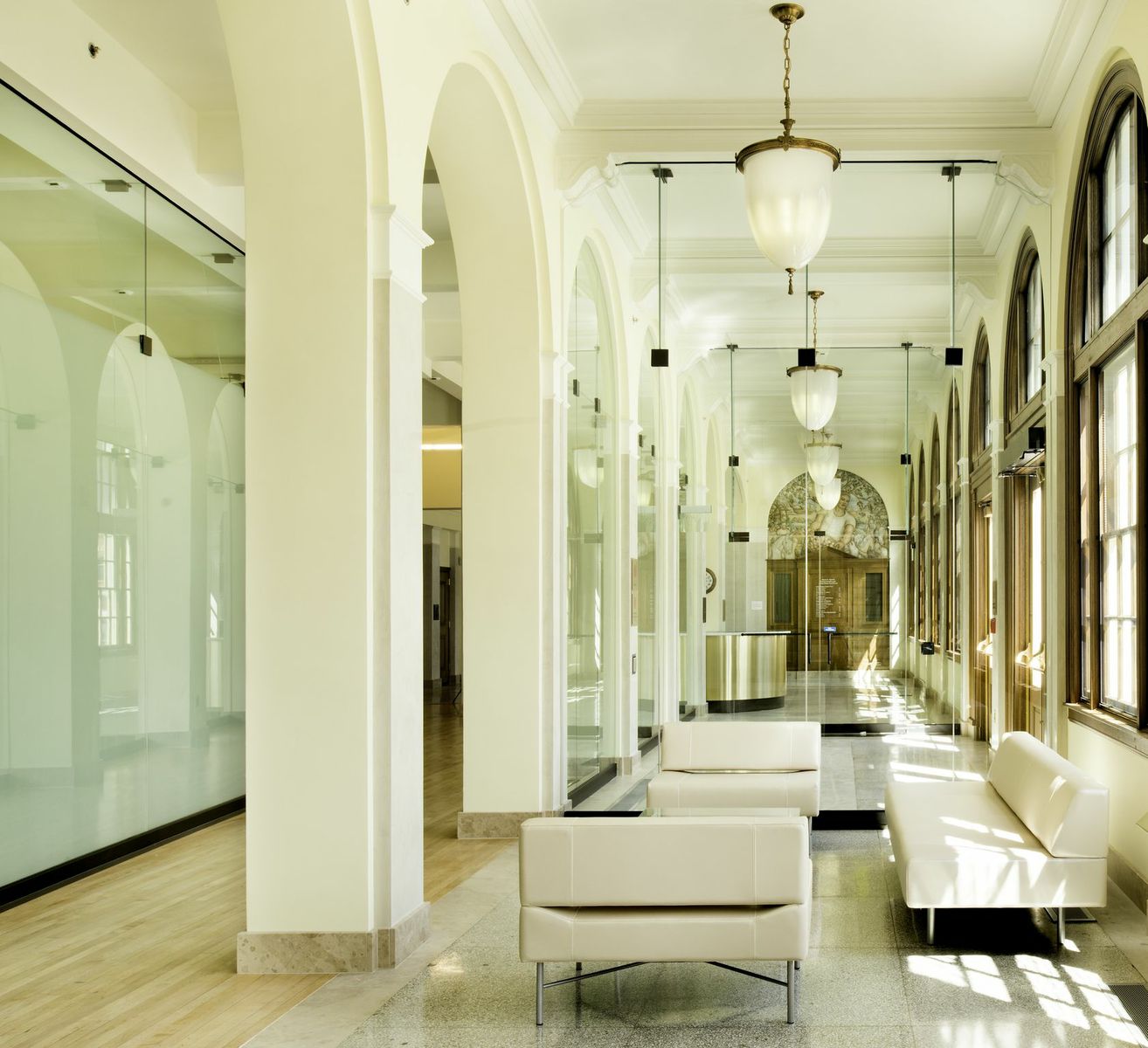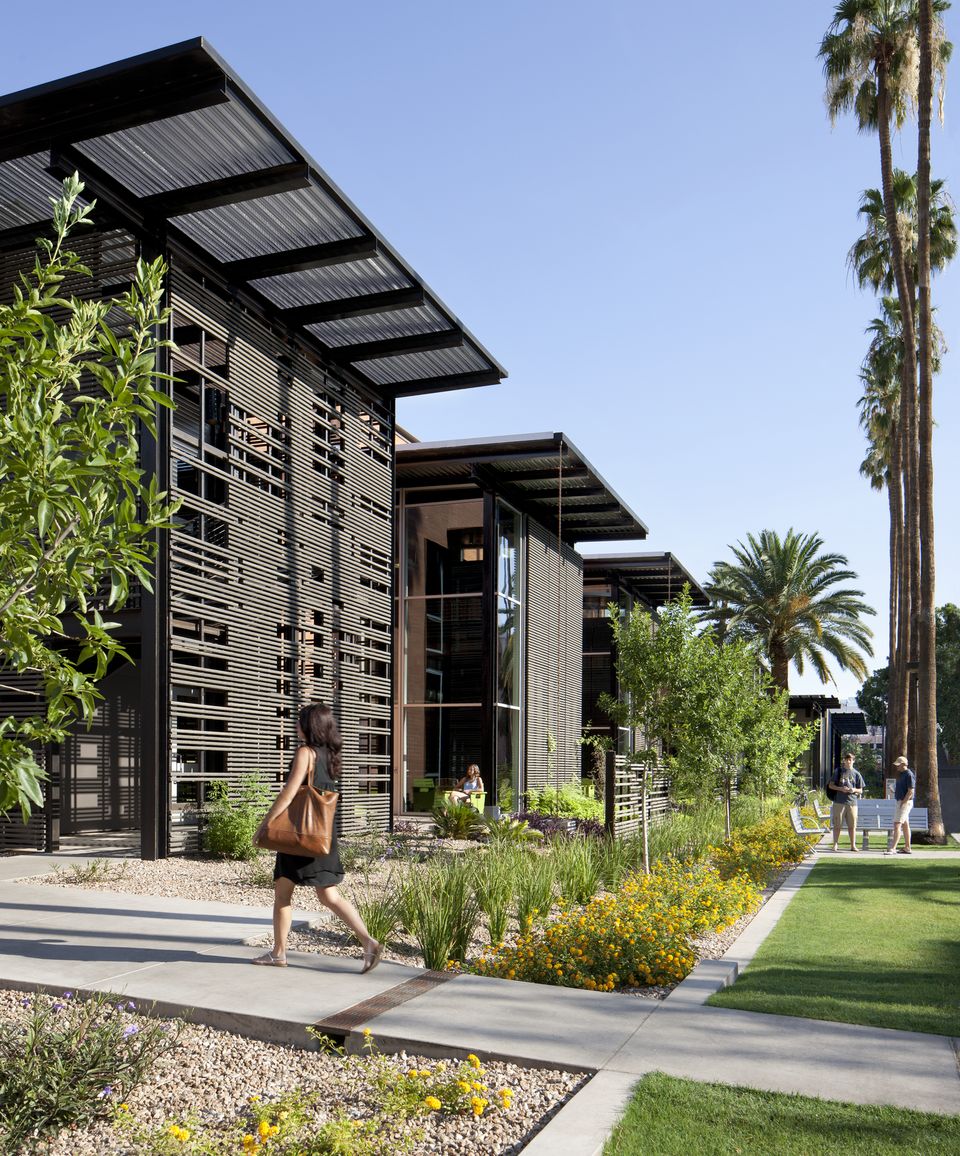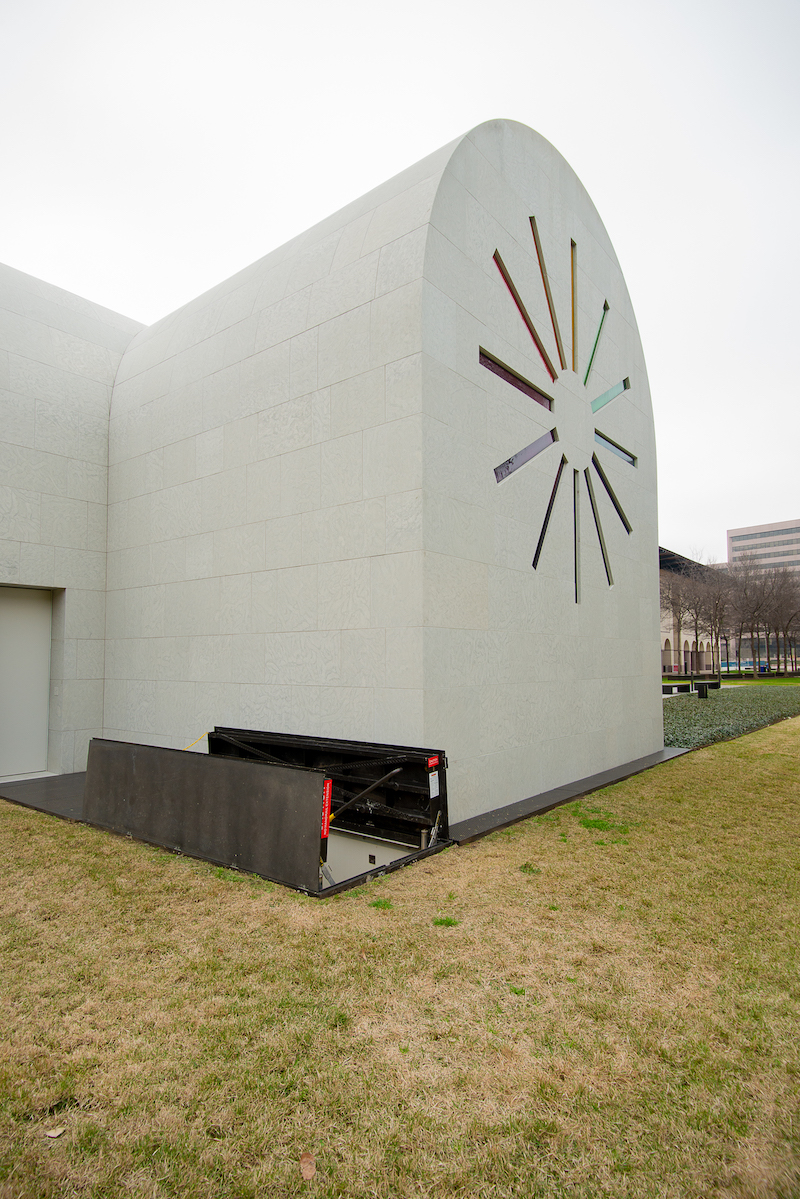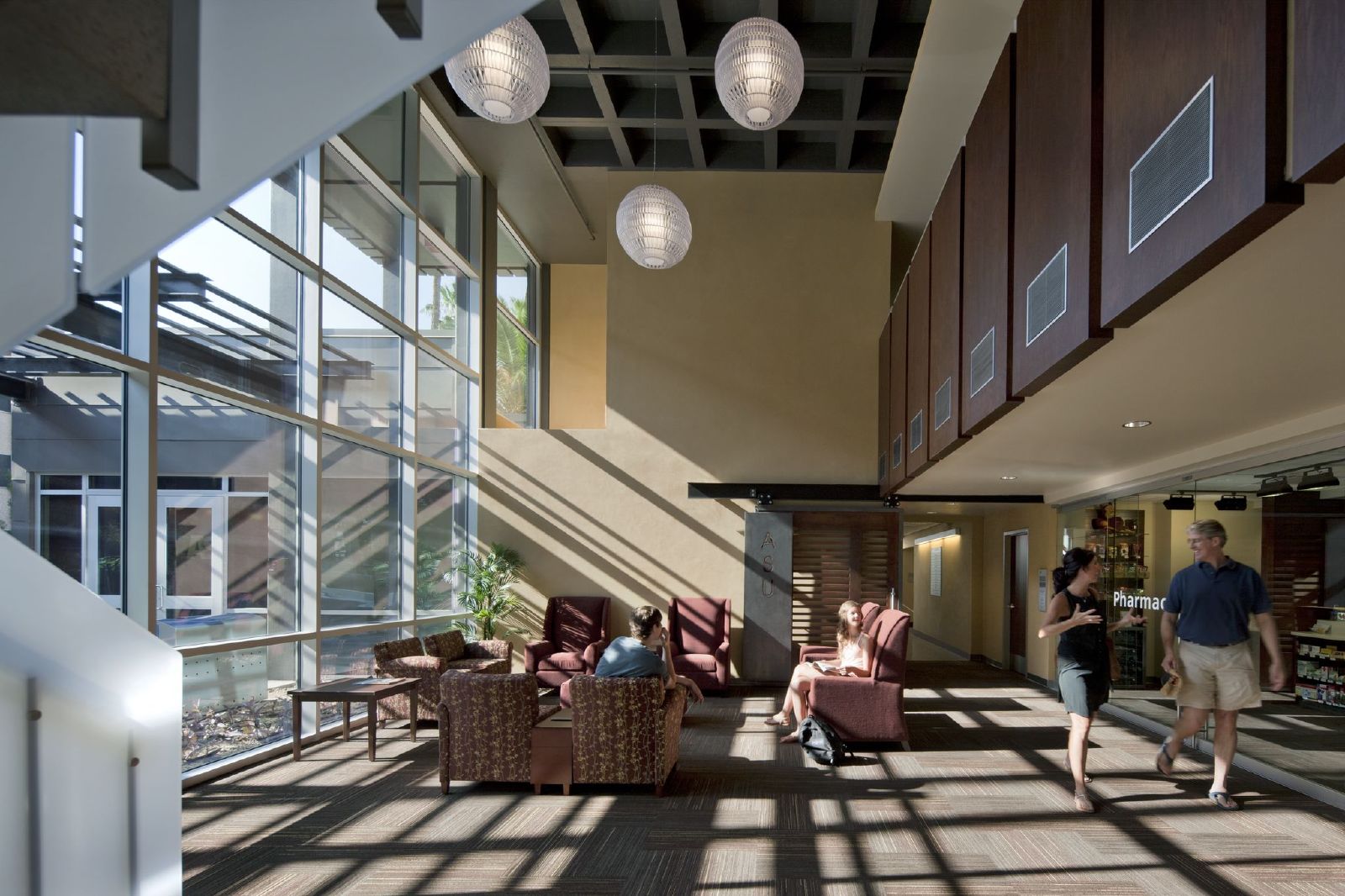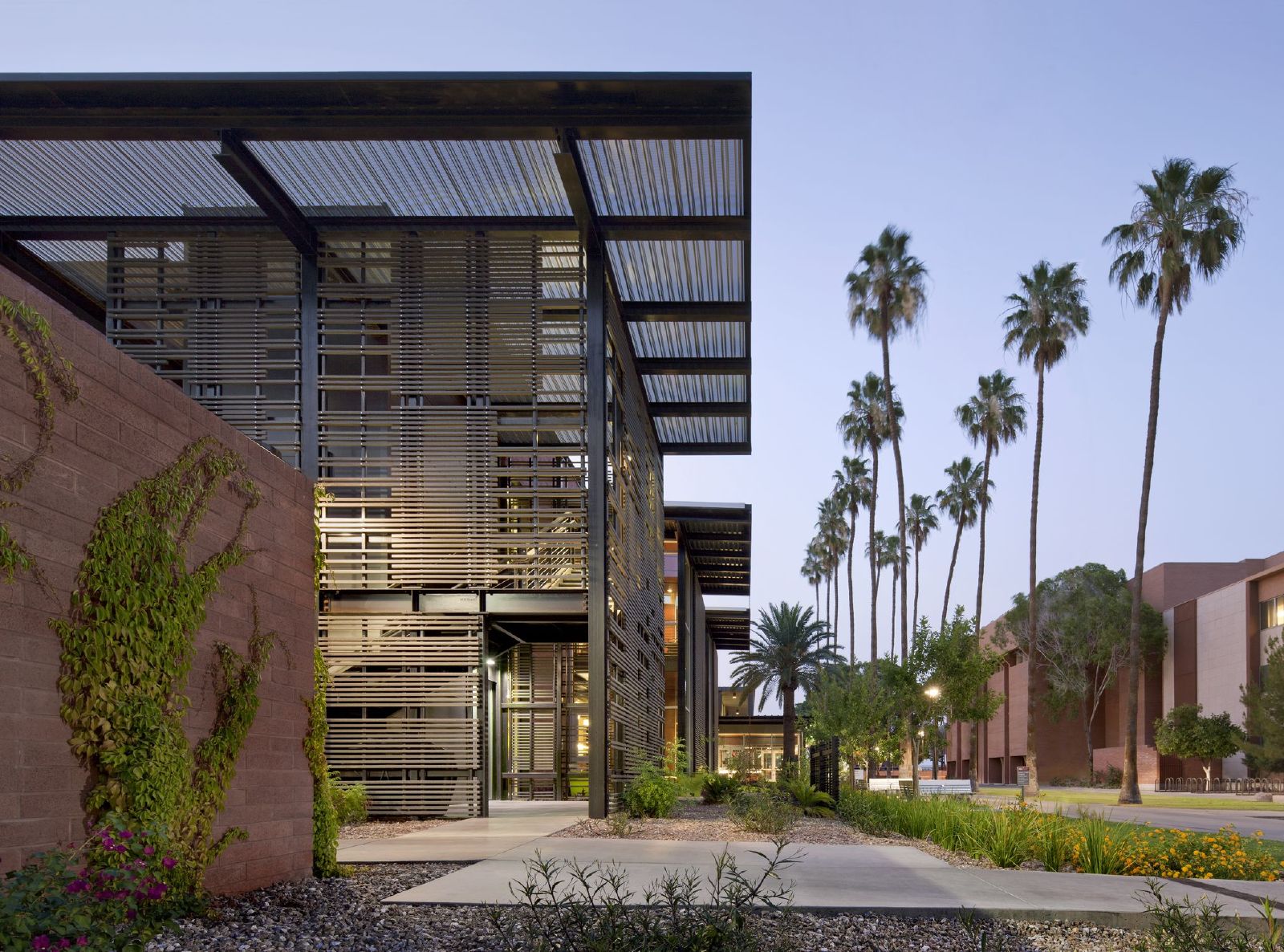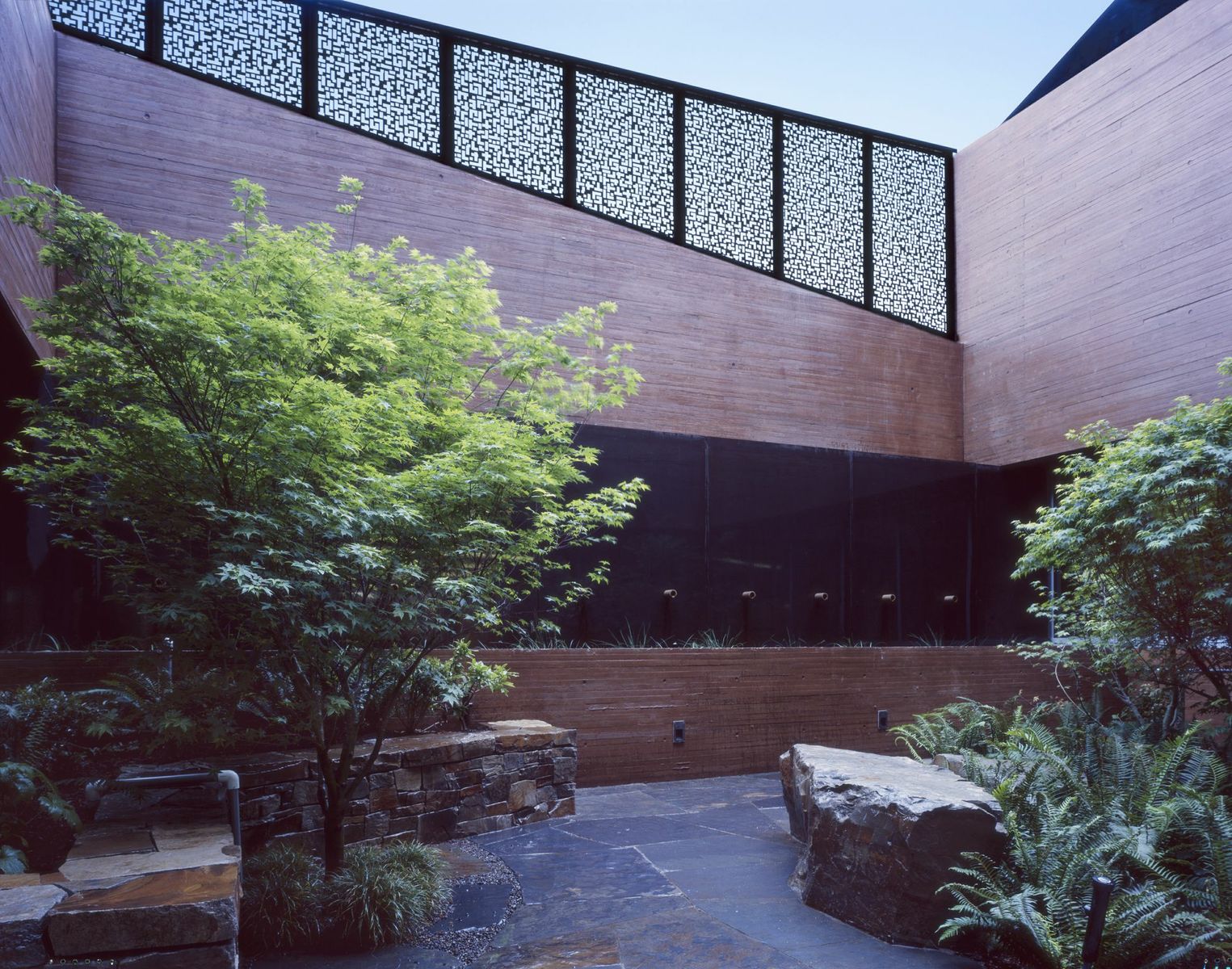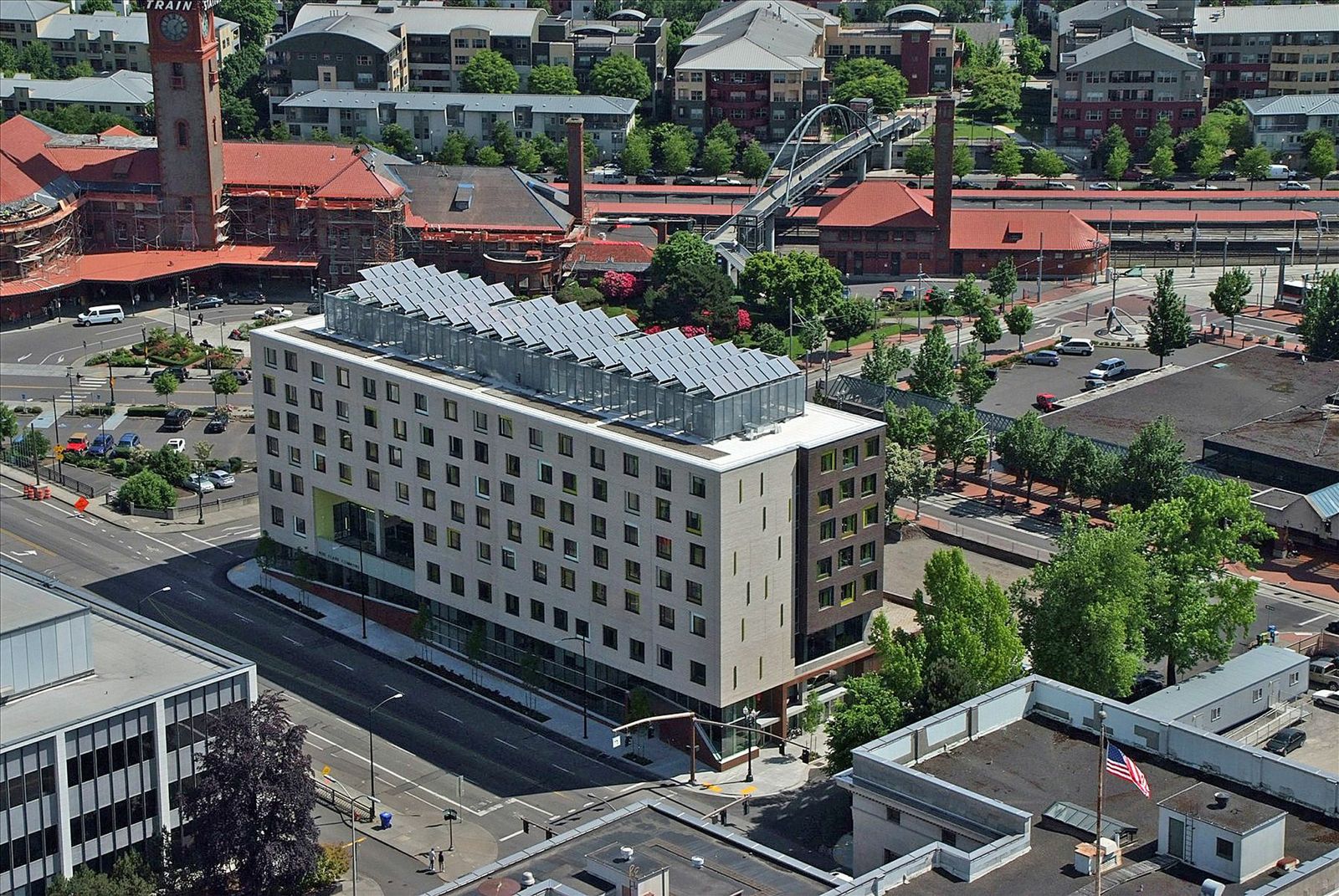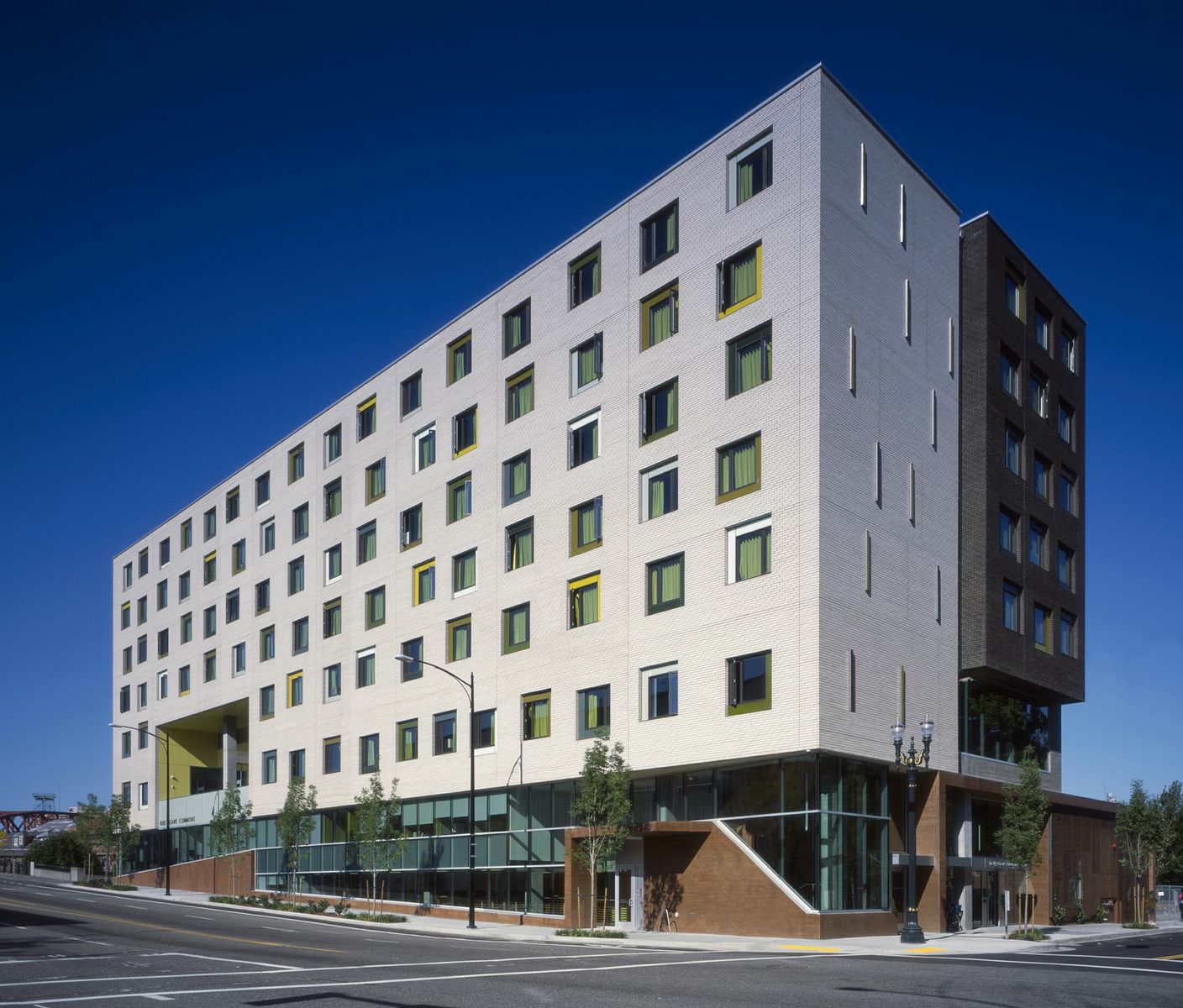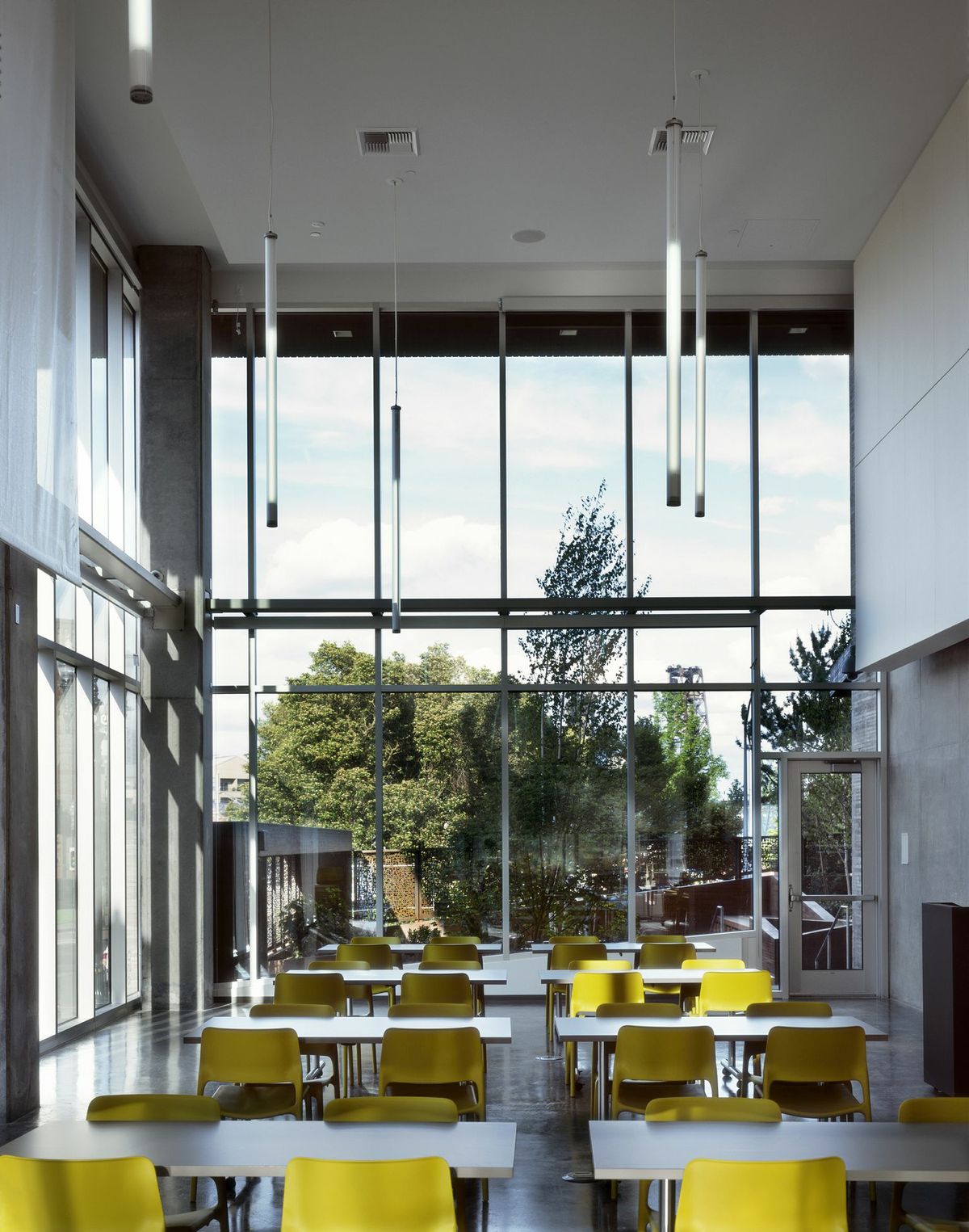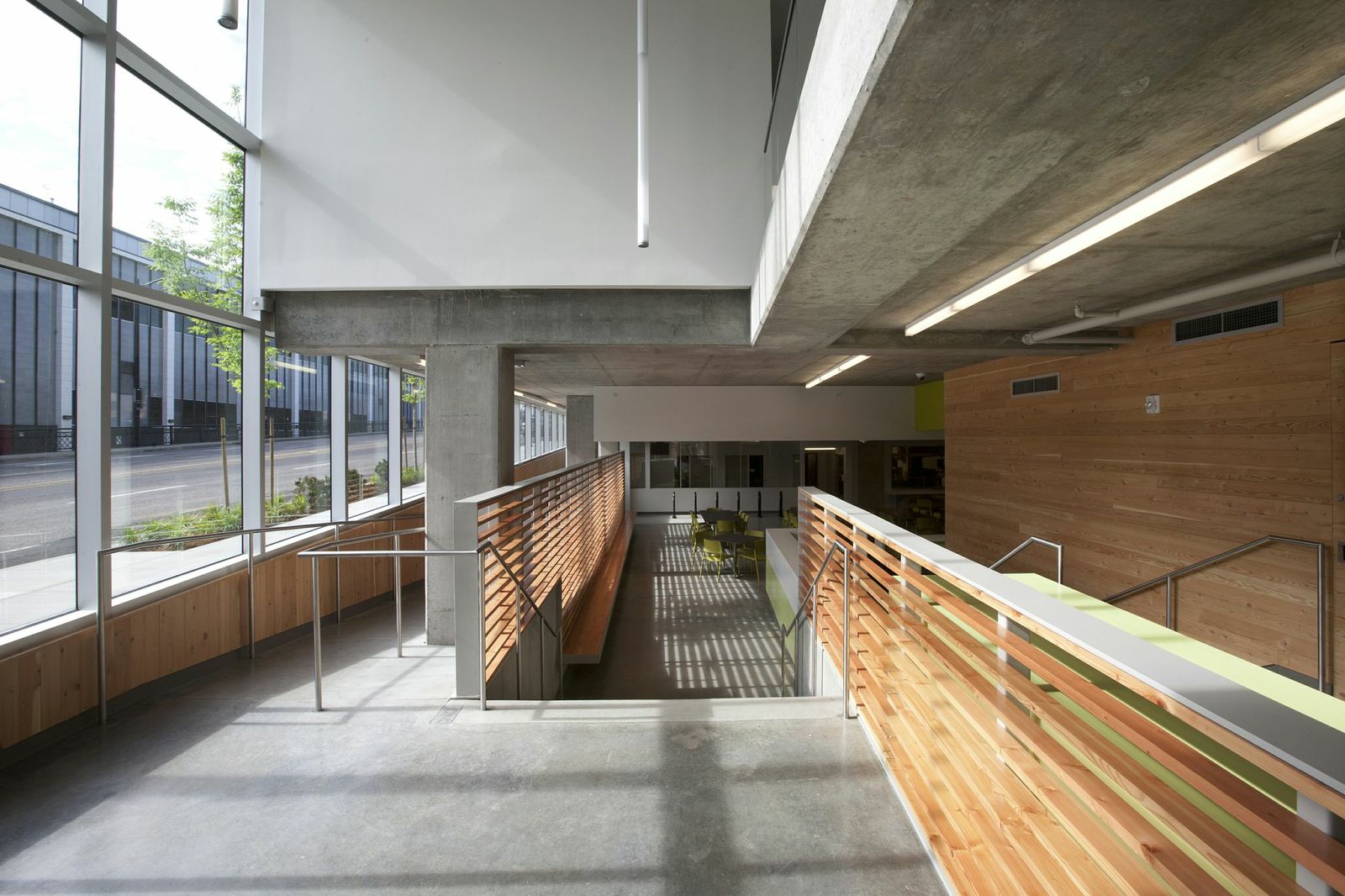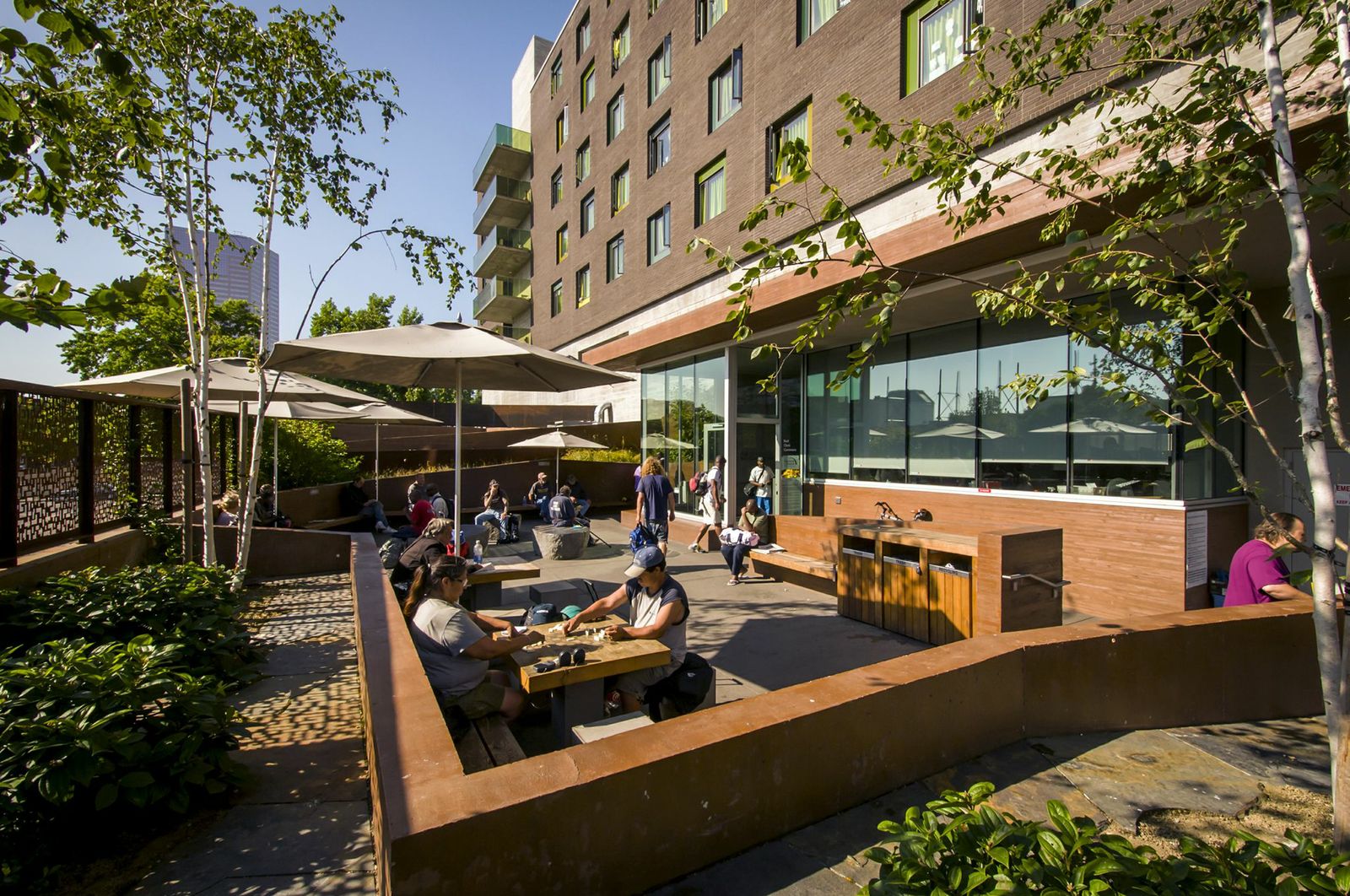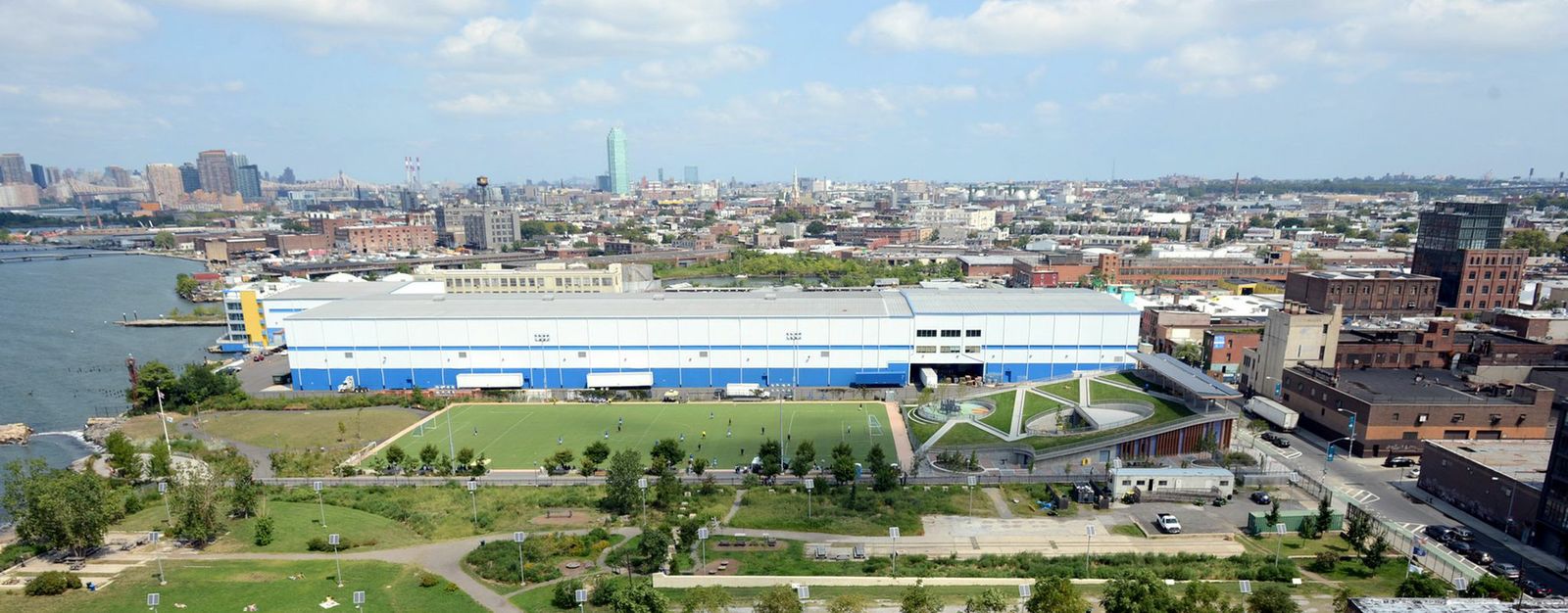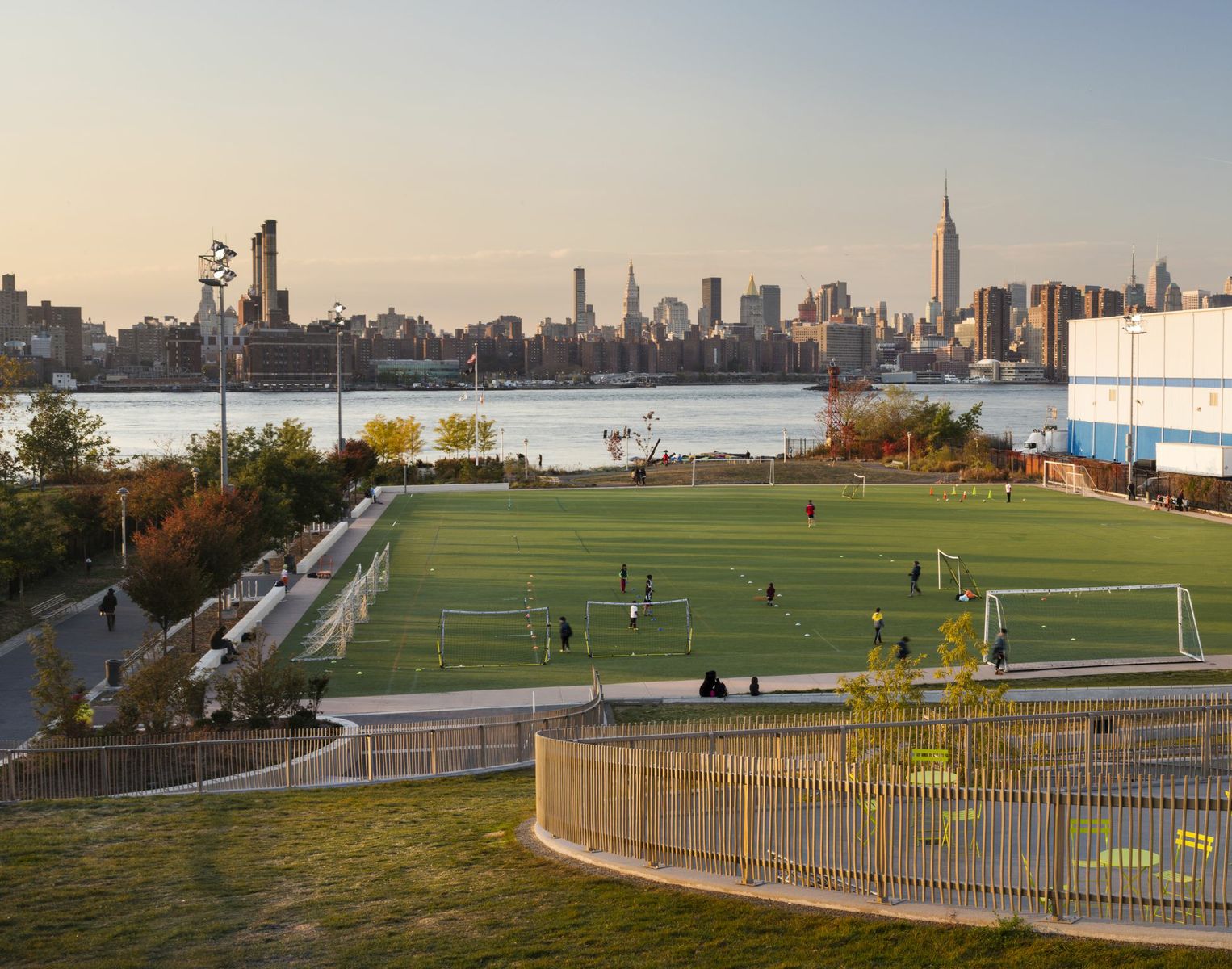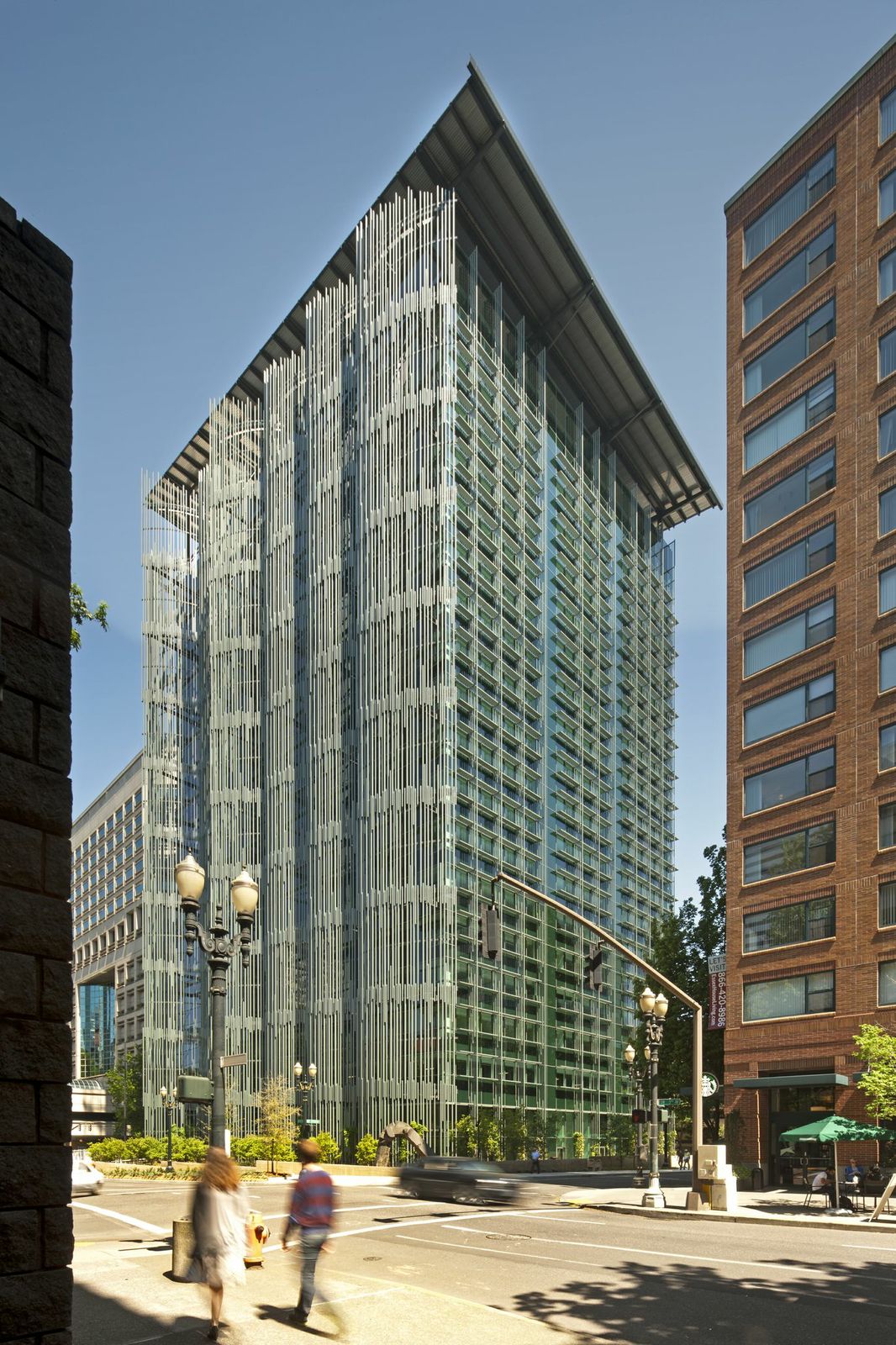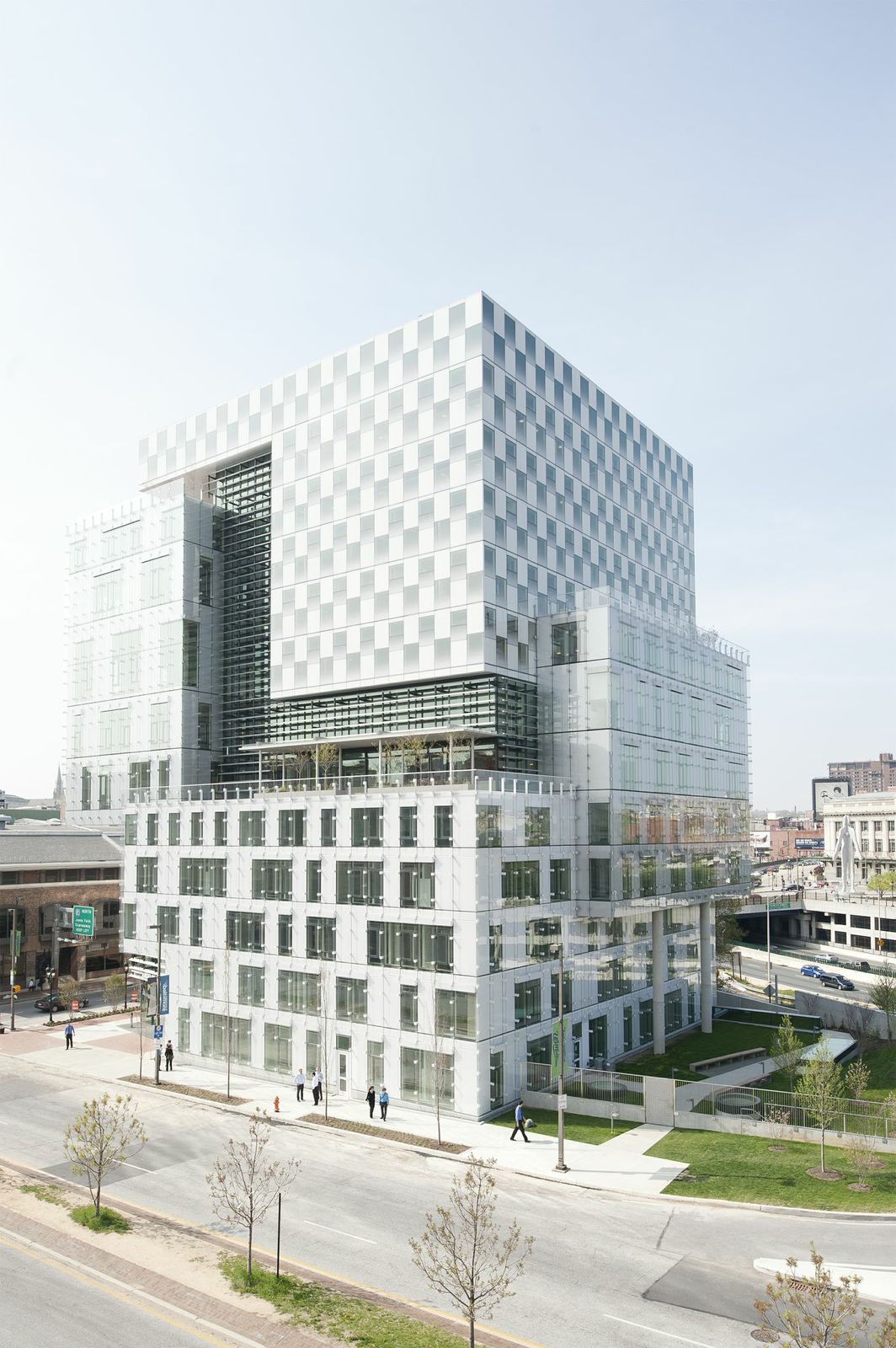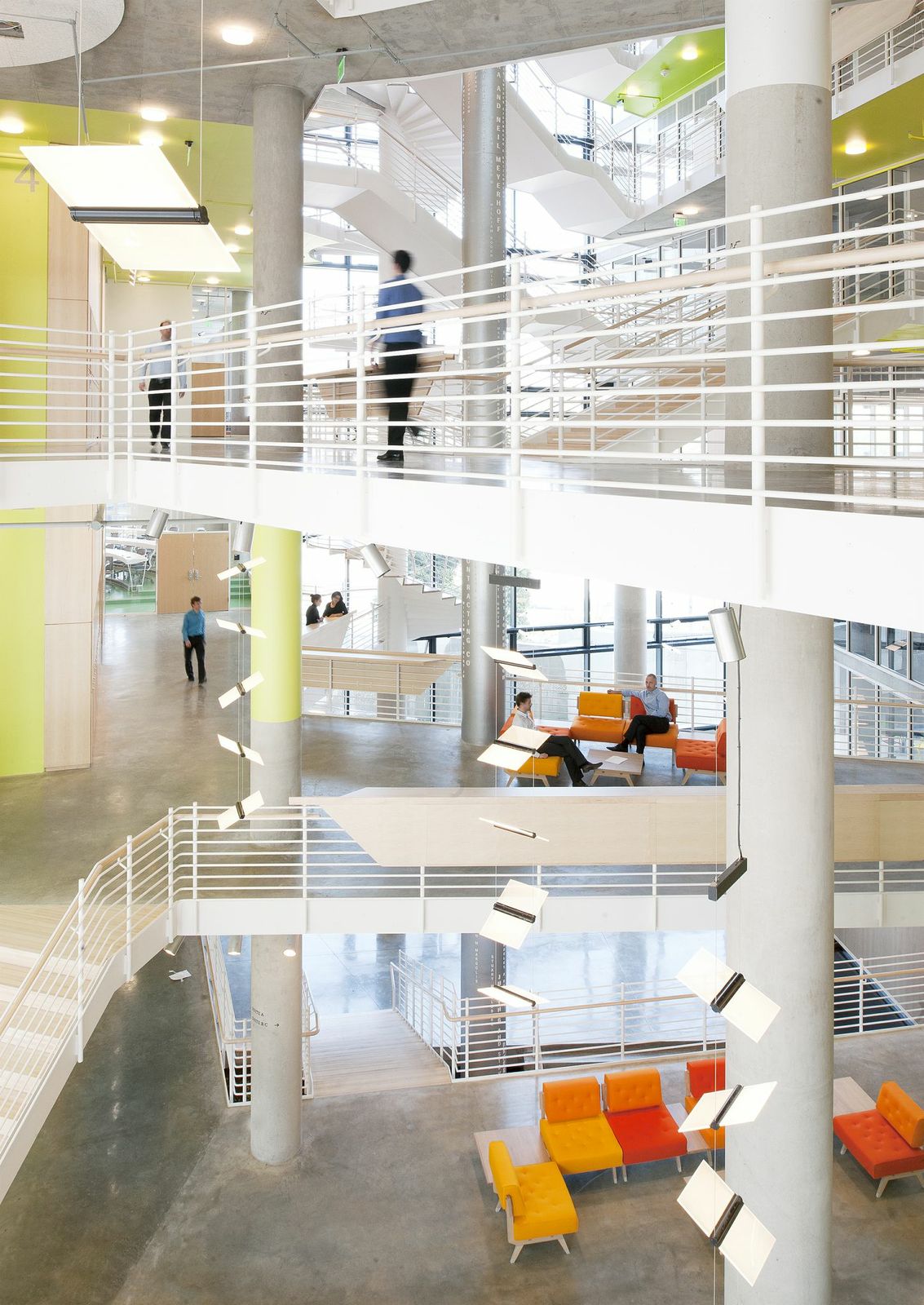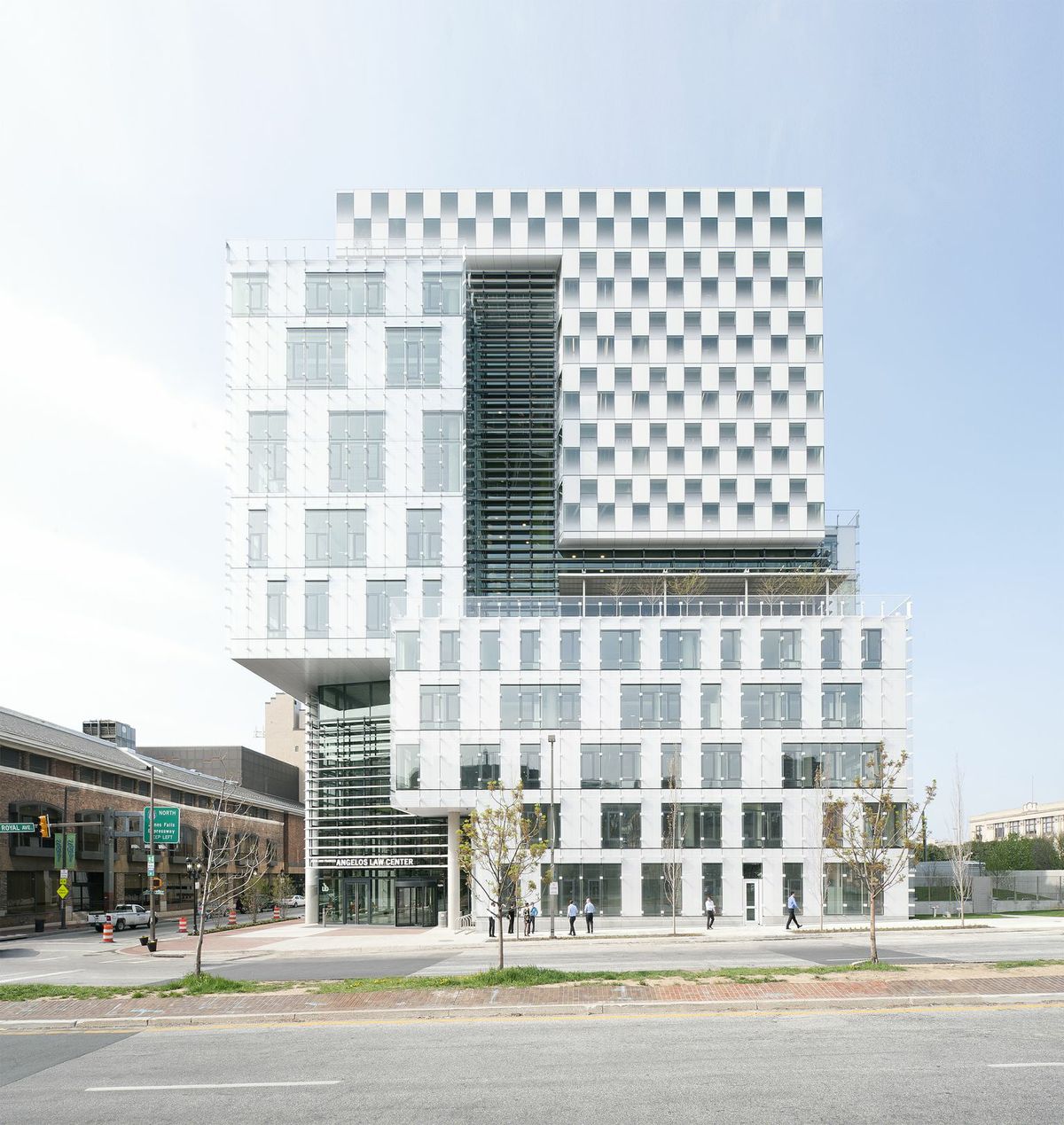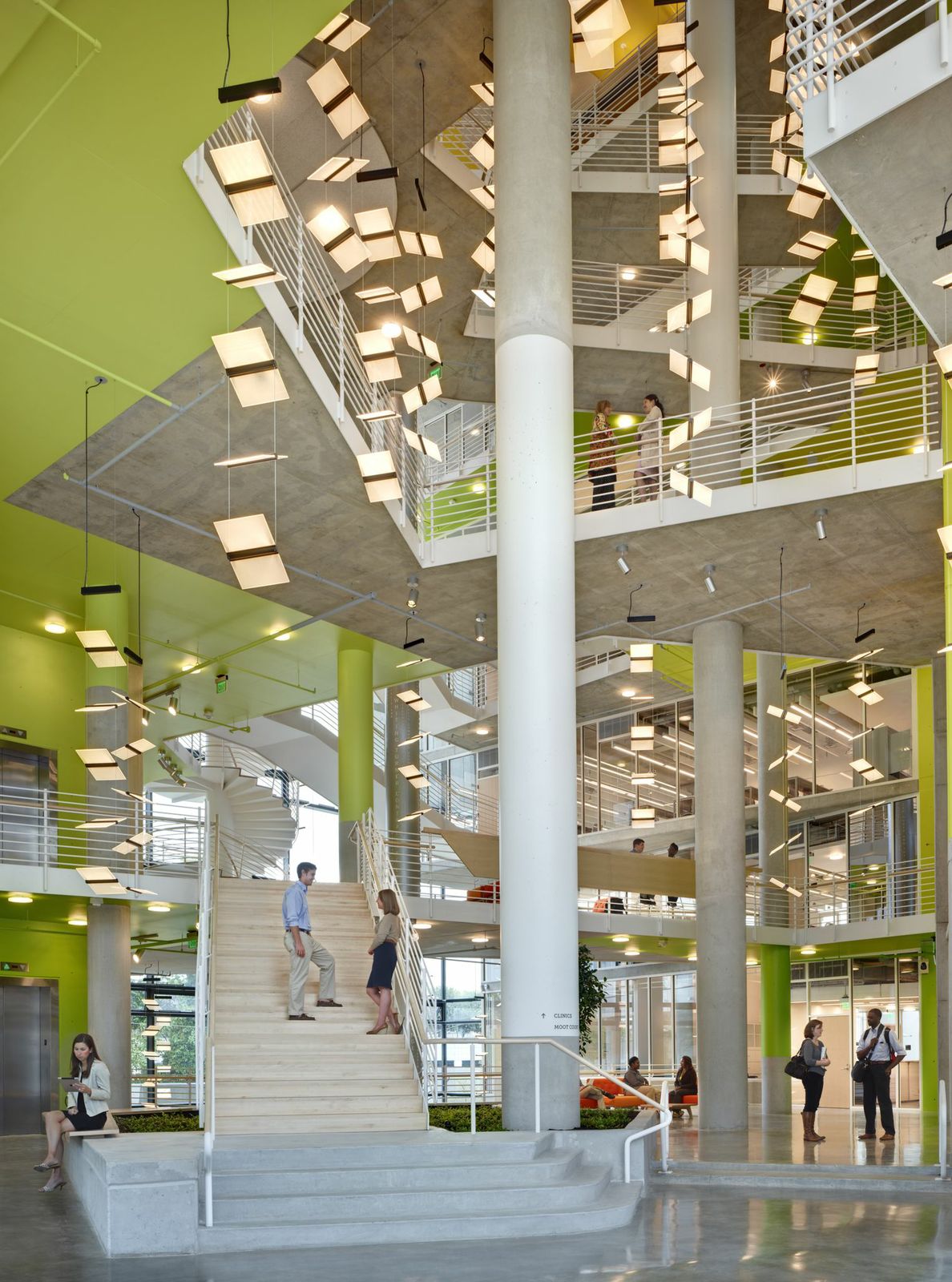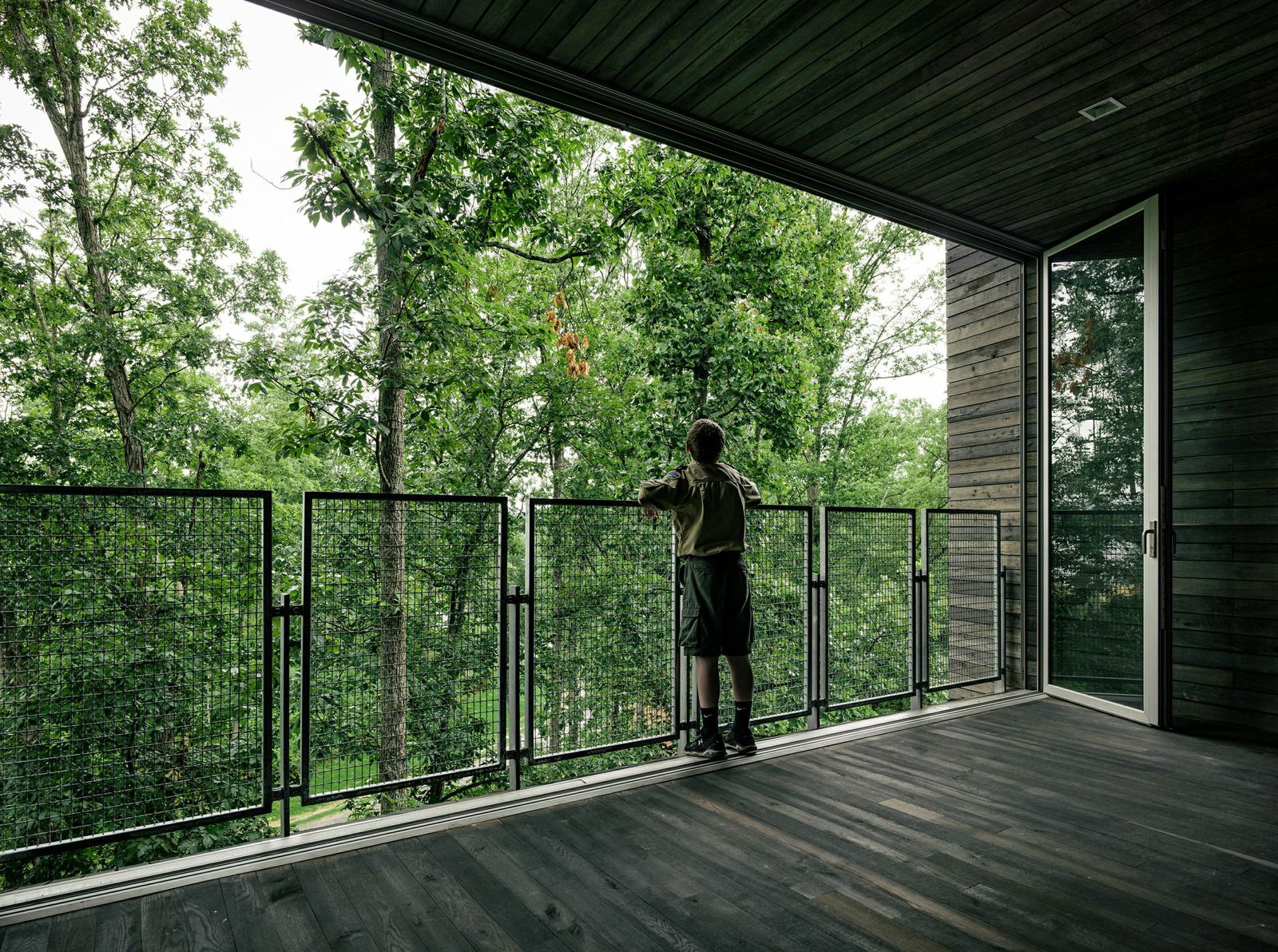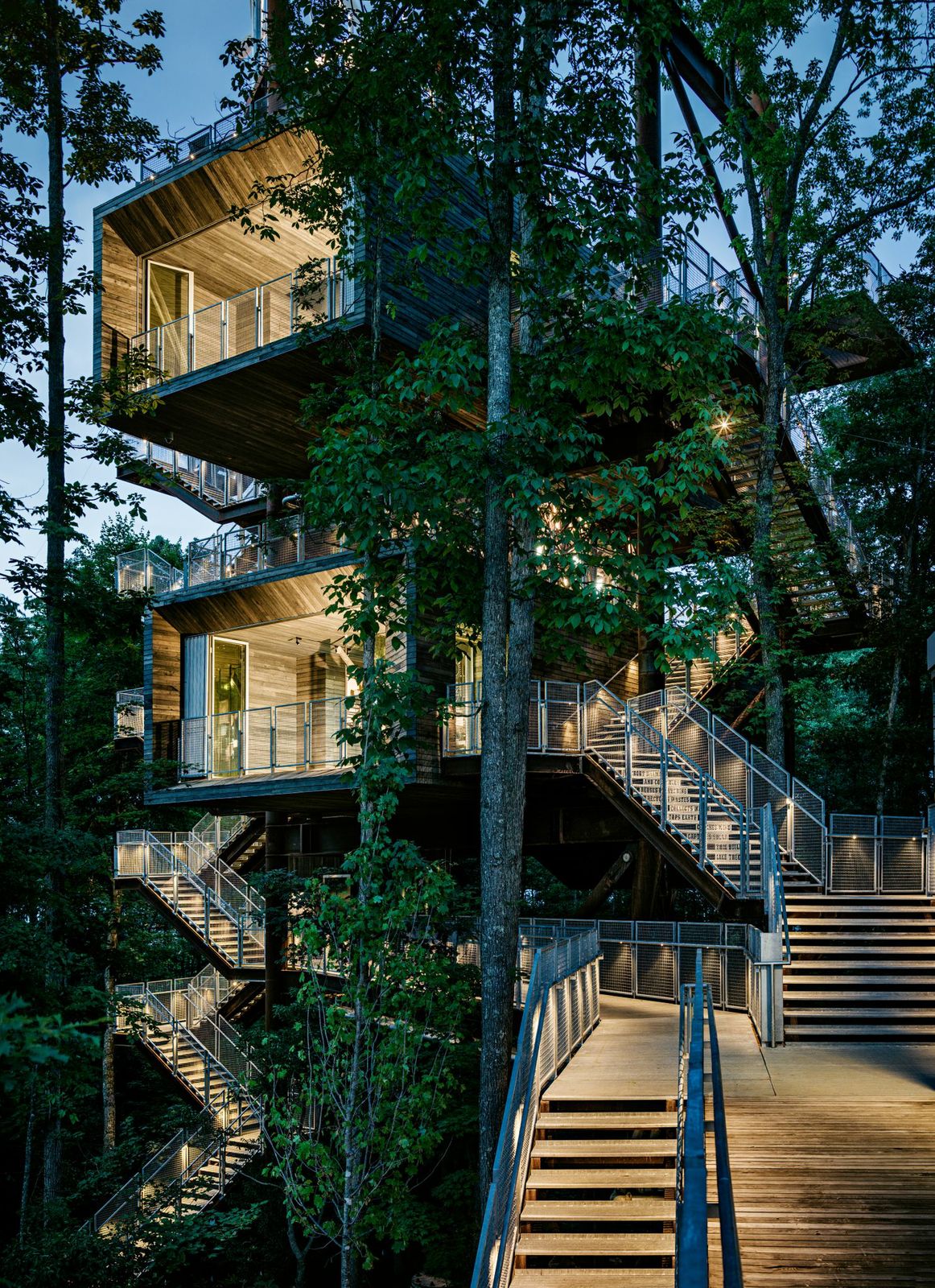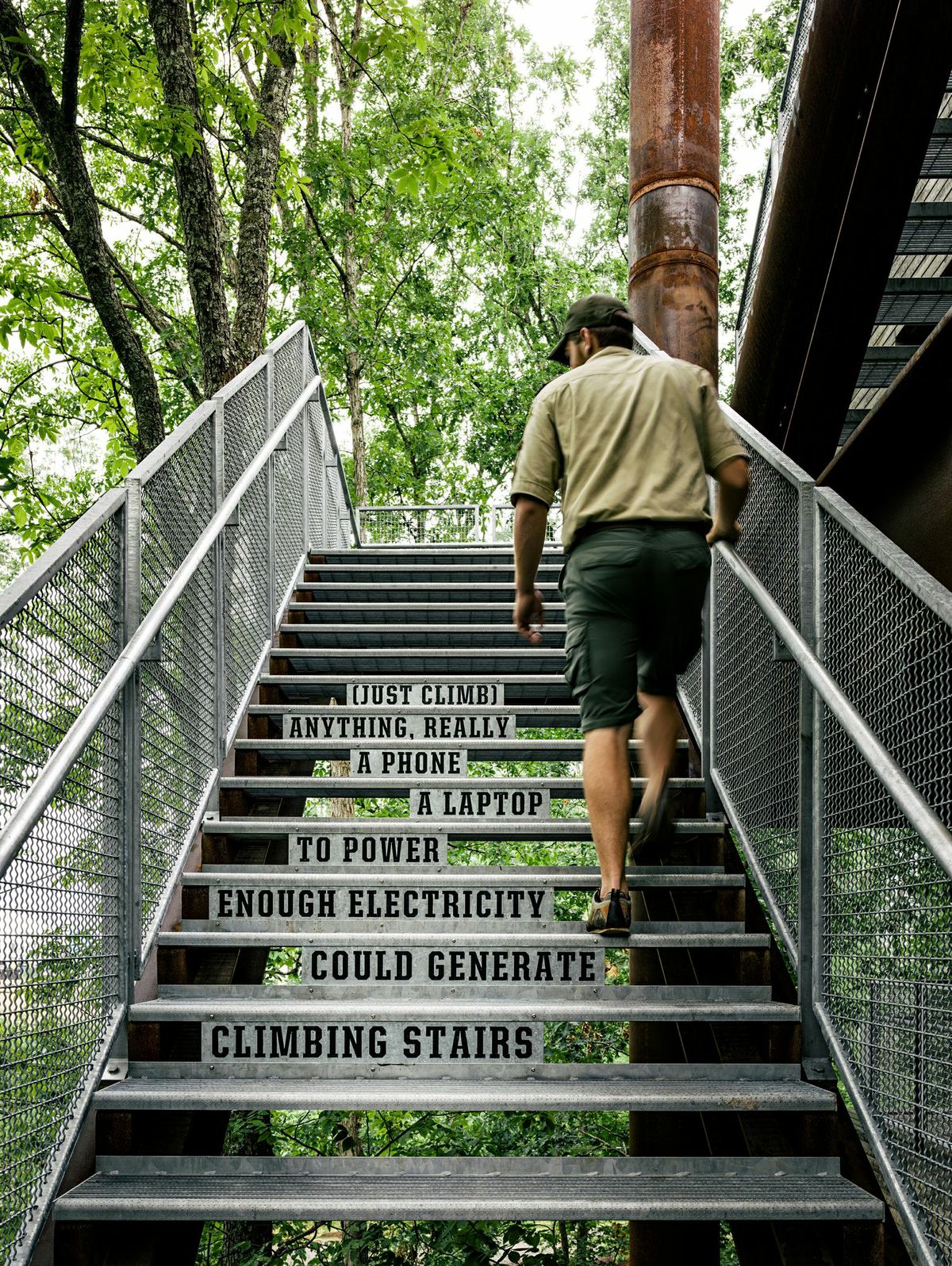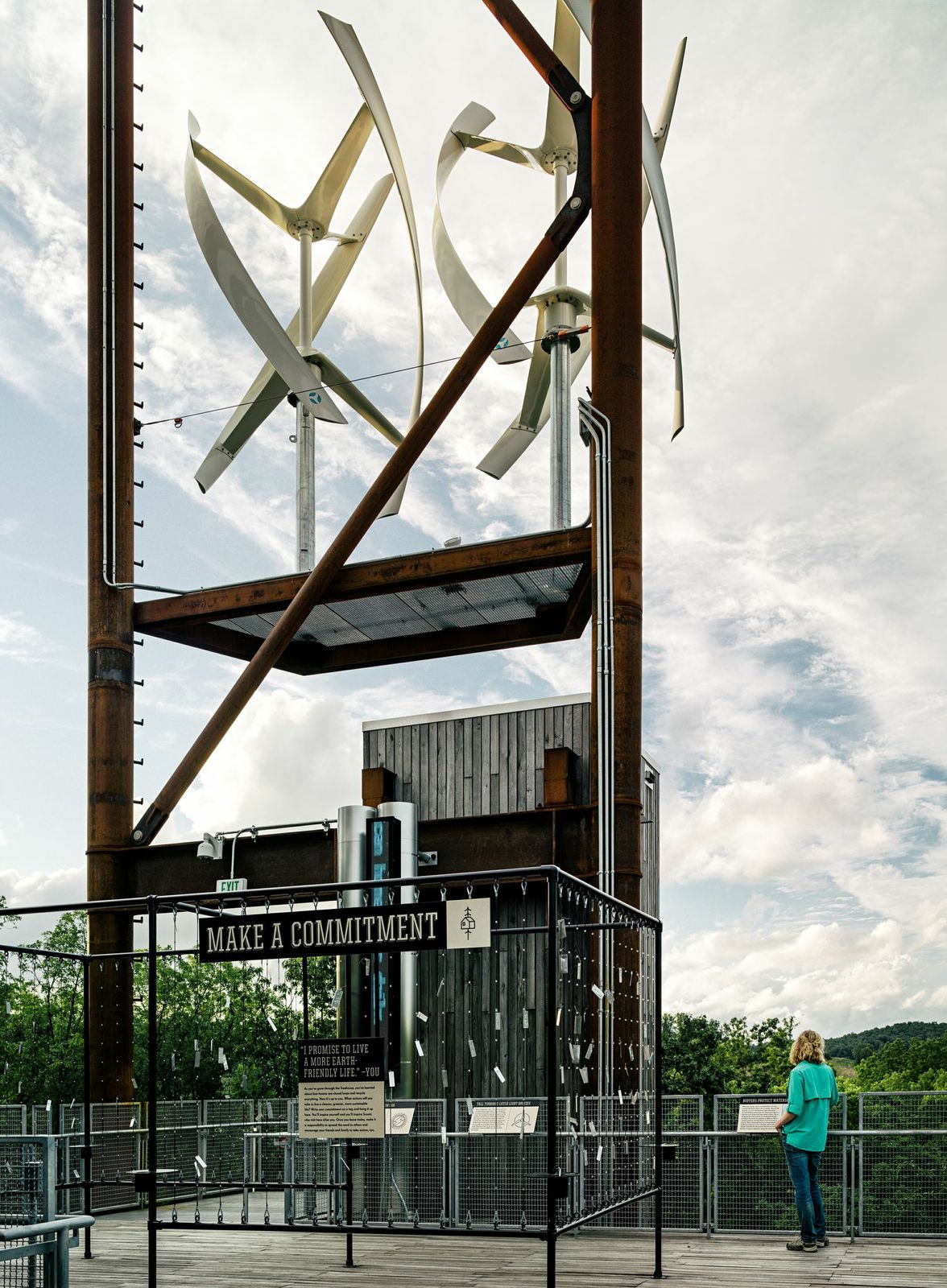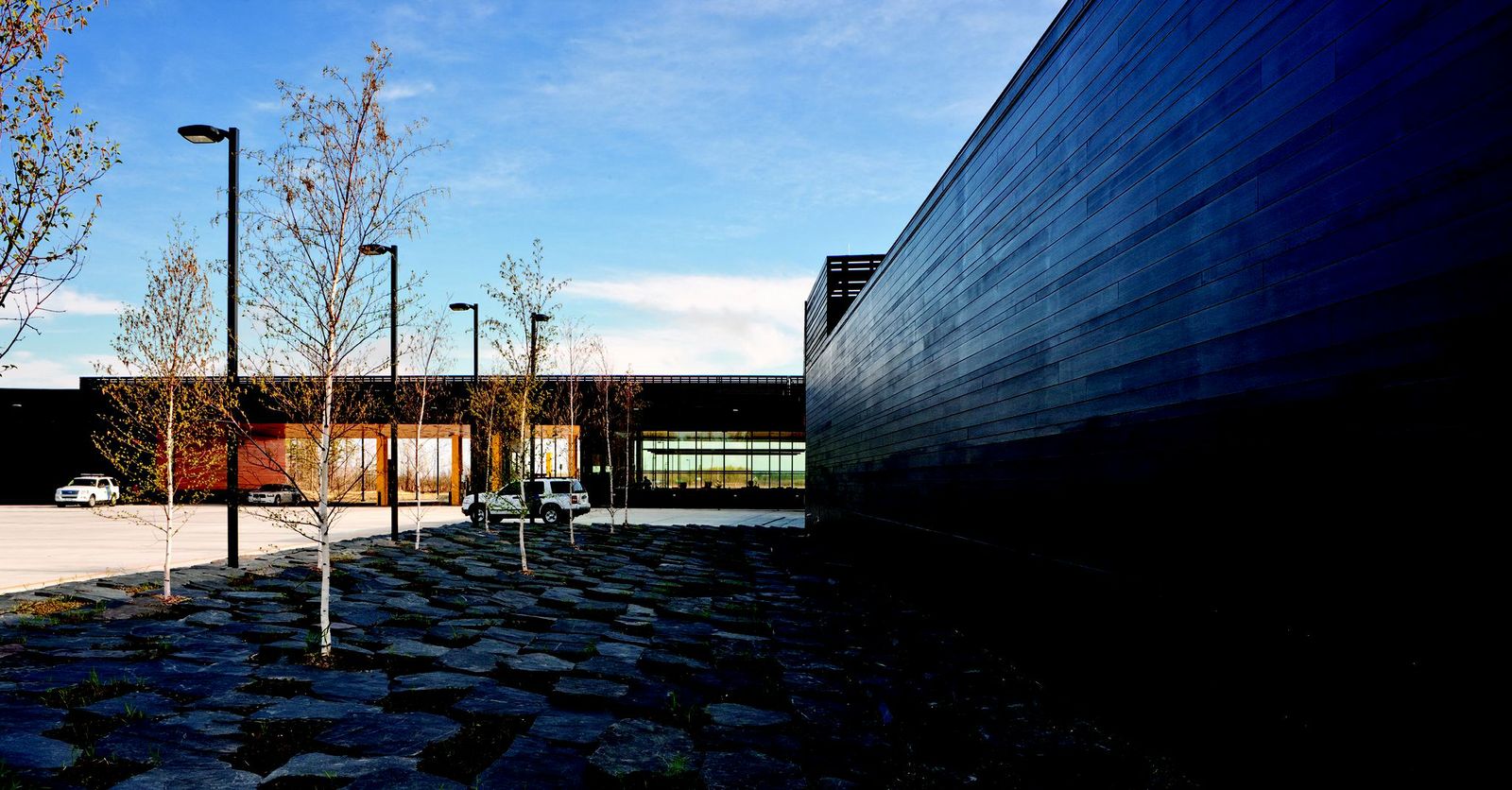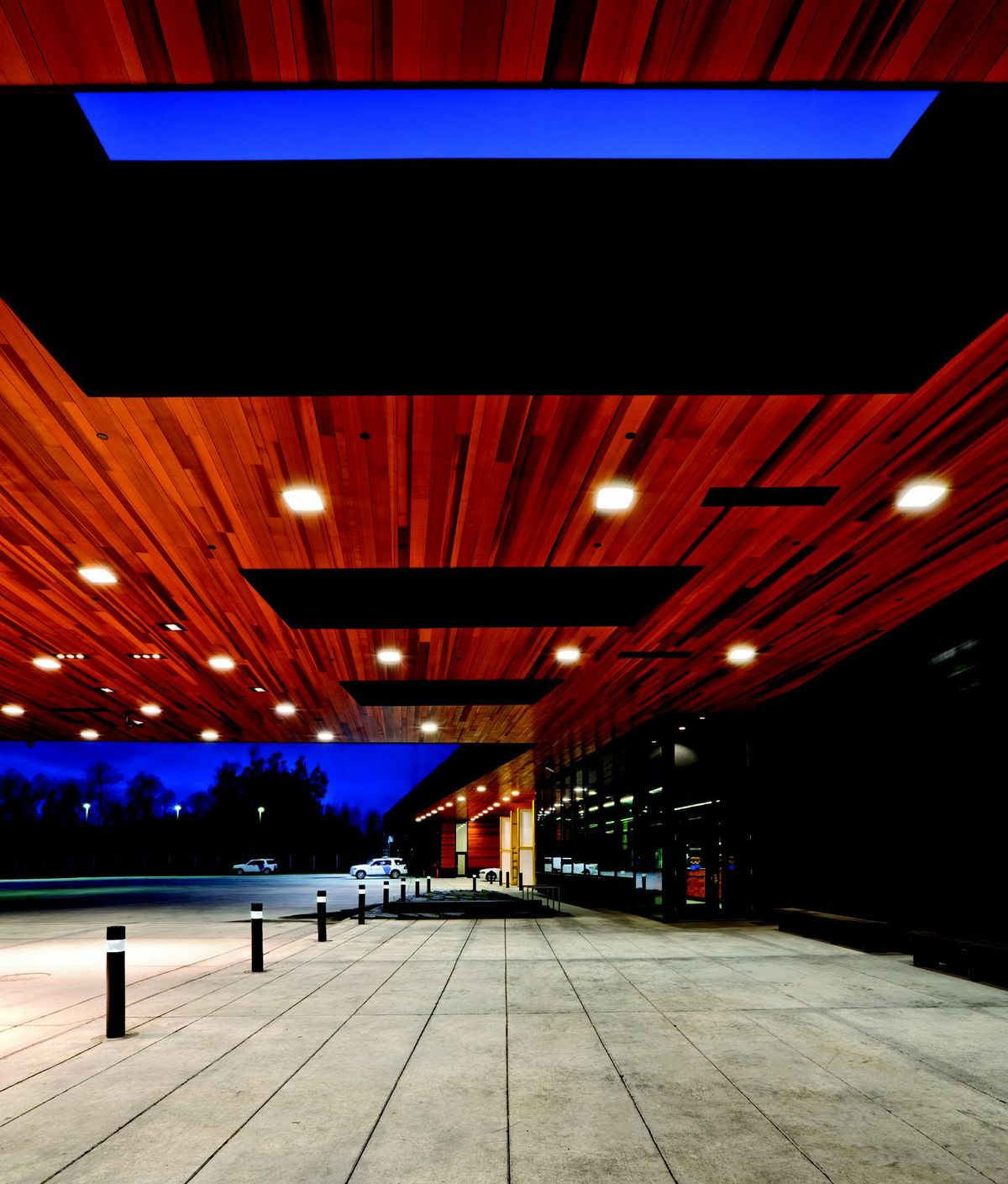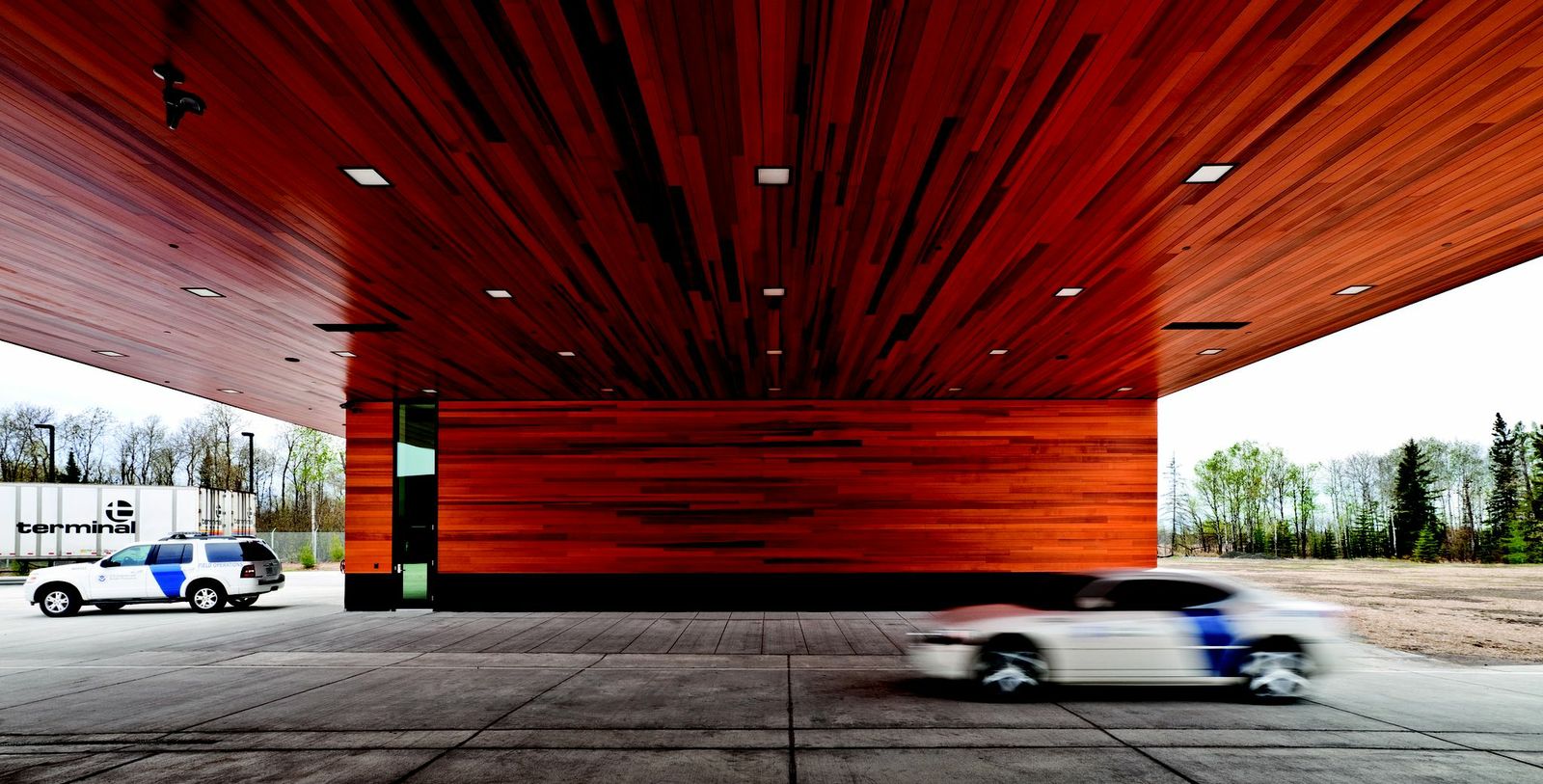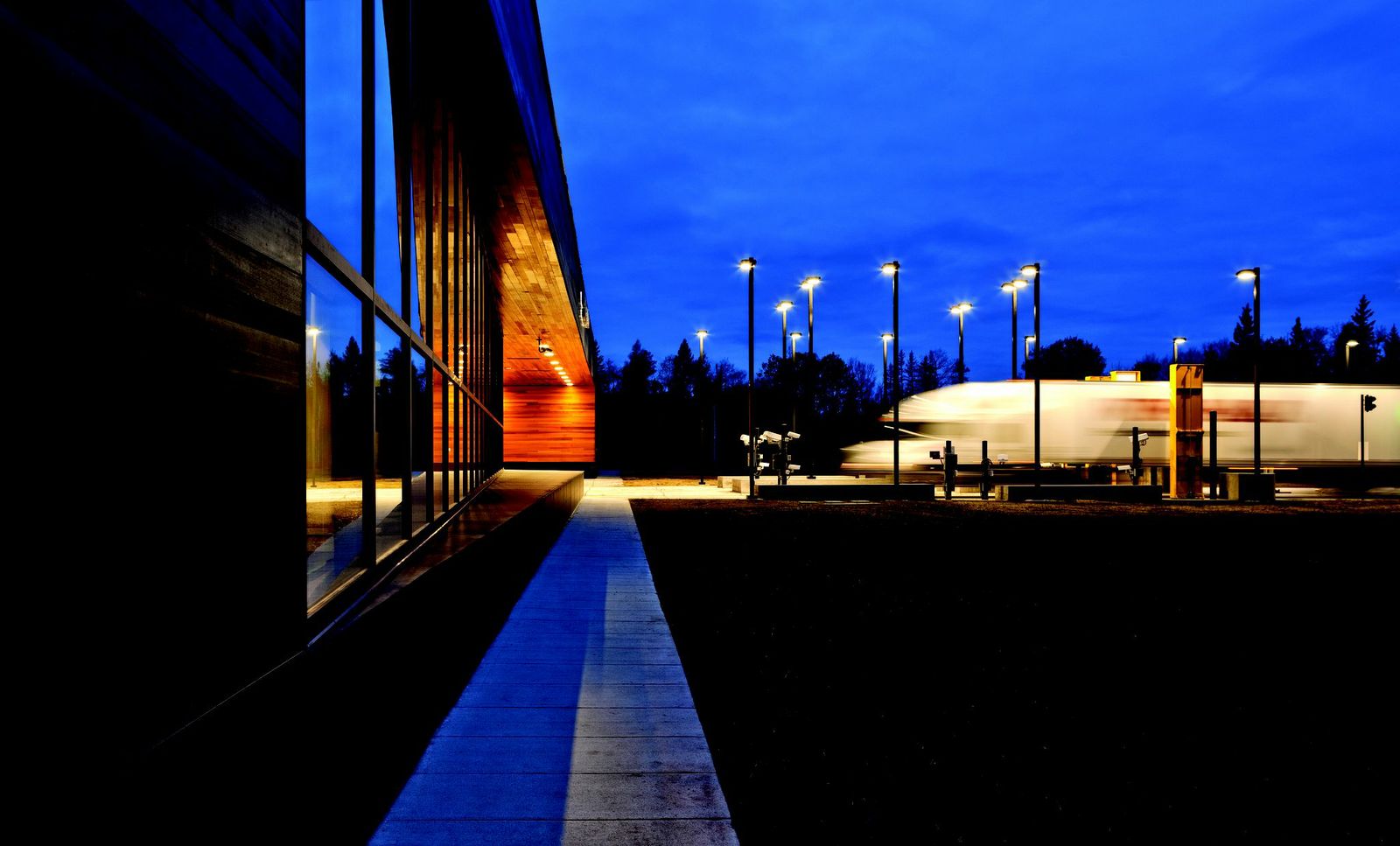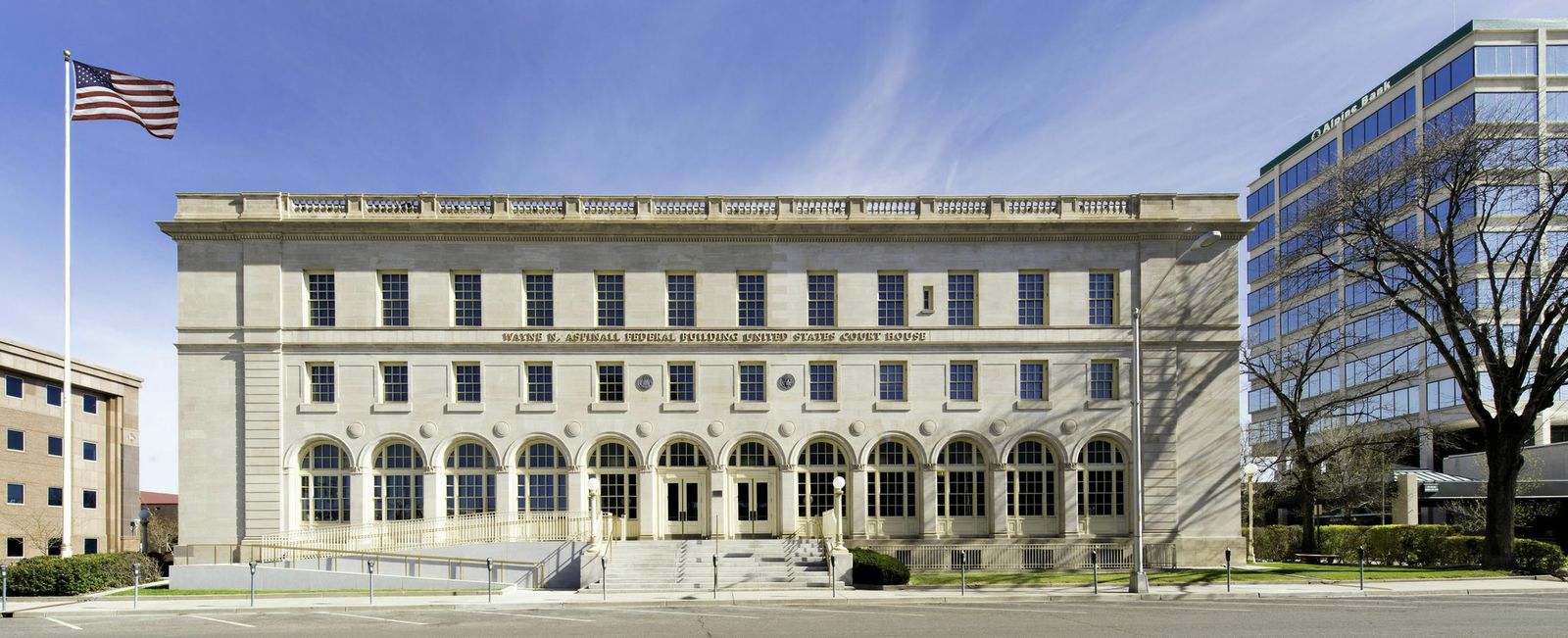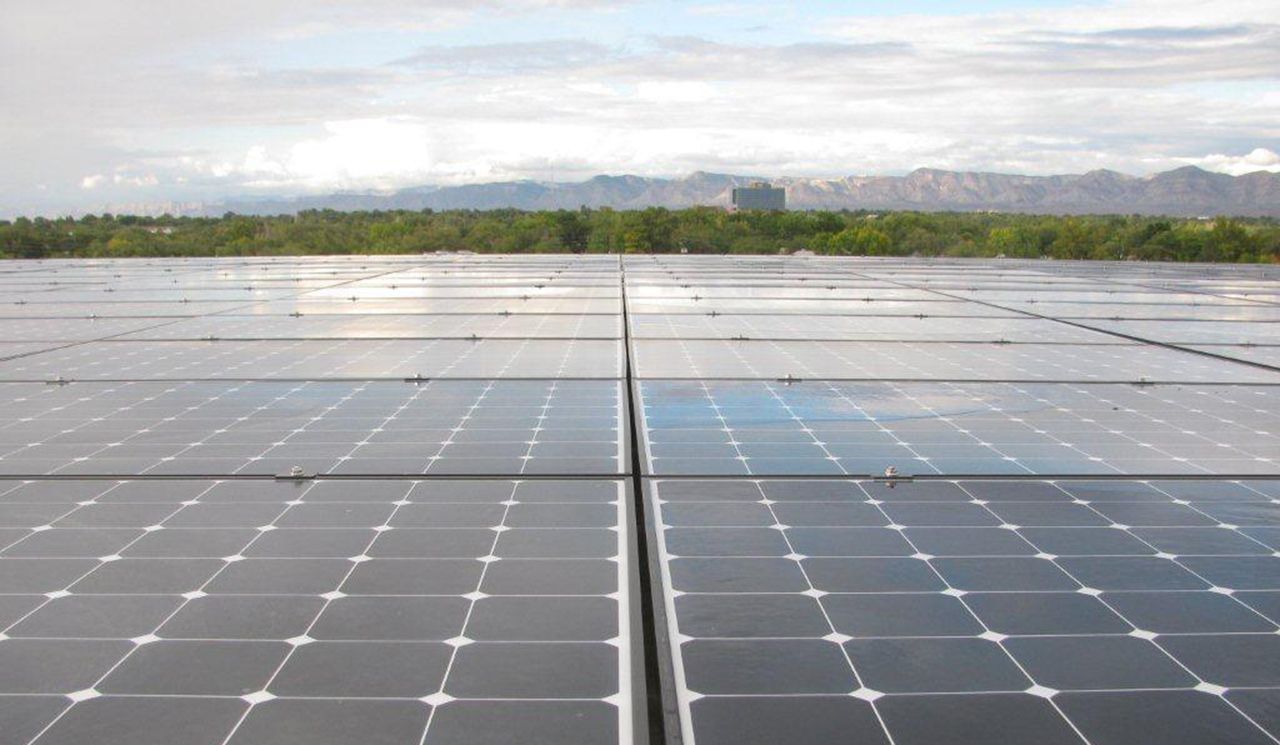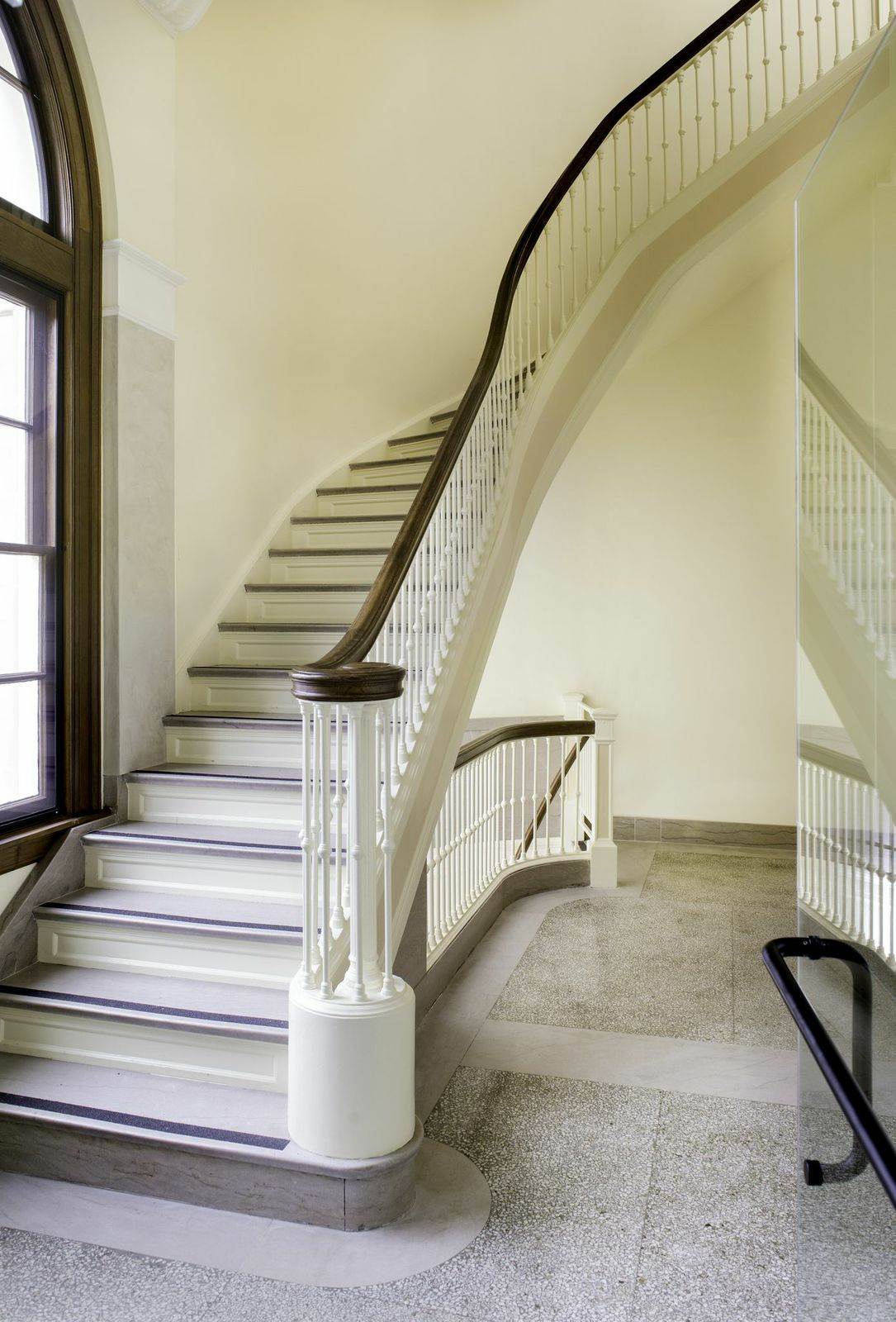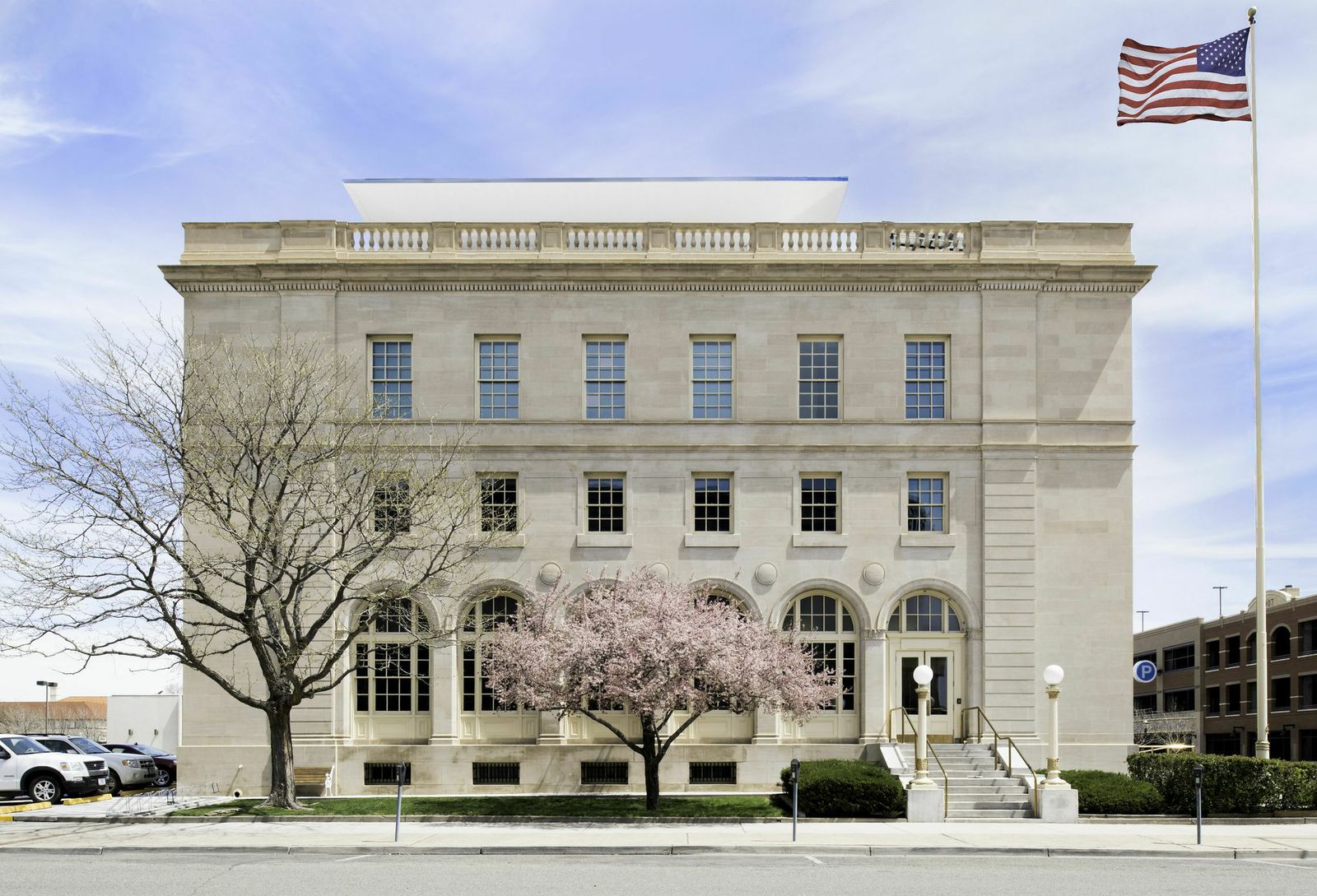The American Institute of Architects' Committee on the Environment (COTE) has selected the top ten examples of sustainable architecture and ecological design projects that protect and enhance the environment. The projects will be honored at the AIA 2014 National Convention and Design Exposition in Chicago.
The COTE Top Ten Awards program, now in its 18th year, is the profession's best known recognition program for sustainable design excellence. The program celebrates projects that are the result of a thoroughly integrated approach to architecture, natural systems, and technology.
These projects make a positive contribution to their communities, improve comfort for building occupants, and reduce environmental impacts through strategies such as reuse of existing structures, connection to transit systems, low-impact and regenerative site development, energy and water conservation, use of sustainable or renewable construction materials, and design that improves indoor air quality.
The 2014 COTE Top Ten Green Projects jury included: Frederick Steiner, School of Architecture at the University of Texas at Austin; Catherine Gavin, Texas Architect; Bill Browning, Hon. AIA, Terrapin Bright Green; Thomas E. Simpson, PE, LEED AP, US East Integral Group; and Jennifer Yoos, FAIA, LEED AP, VJAA.
Here's a recap of the 2014 winners:
1. Arizona State University Student Health Services, Tempe, Ariz
Lake|Flato Architects + Orcutt|Winslow
Photos: Bill Timmerman
The Arizona State University (ASU) Health Services Building is an adaptive reuse project that transformed the existing sterile and inefficient clinic into a clearly organized, efficient, and welcoming facility. The design imbues the new facility with a sense of health and wellness that leverages Tempe’s natural environment and contributes to a more cohesive pedestrian oriented campus. The building’s energy performance is 49% below ASHRAE 90.1-2007, exceeding the current target of the 2030 Challenge. The facility achieved LEED Platinum certification and is one of the best energy performers on campus as evidenced by ASU’s Campus Metabolism interactive web-tool tracking real-time resource use.
2. Bud Clark Commons, Portland, Ore.
Holst Architecture
Photos: Sally Schoolmaster
As a centerpiece of Portland’s 10-Year Plan to End Homelessness, this LEED Platinum project provides a continuum of services to help transition homeless individuals toward stable, permanent living arrangements. The architecture helps achieve this goal with a walk-in day center with public courtyard and access to support services; a 90-bed temporary shelter; and a separate and secure entrance to 130 efficient, furnished studio apartments for homeless individuals seeking permanent housing.
The building’s design aims to deinstitutionalize services and housing for the most vulnerable in our population. Sustainable features include large-scale graywater recycling, zero stormwater runoff, solar hot water, and a high-performance envelope, resulting in energy savings estimated at $60,000 annually.
3. Bushwick Inlet Park, Brooklyn, N.Y.
Kiss + Cathcart, Architects
Photos: Paul Warchol
This project is the first phase of the transformation of the Greenpoint–Williamsburg waterfront from a decaying industrial strip to a multifaceted public park. The design team integrated a program of playfields, public meeting rooms, classrooms, and park maintenance facilities, into a city-block sized site. The park building becomes a green hill on the west side, making 100% of the site usable to the public, and offering views to Manhattan. Below the green roof is a complex of building systems – ground source heat pump wells, rainwater harvest and storage, and drip irrigation. A solar trellis produces half the total energy used in the building.
4. Edith Green-Wendell Wyatt Federal Building Modernization, Portland, Ore.
SERA Architects in association with Cutler Anderson Architects
Photo credit: Nic Lehoux
On track to be one of the lowest energy-use buildings in the U.S., EGWW is a model for U.S. General Services Administration nationwide. The project’s goal was to transform the existing building from an aging, energy hog to one of the premiere environmentally-friendly buildings in the nation. With a unique facade of “reeds”, light shelf /sunshades designed by orientation and a roof canopy that supports a 180 kW photovoltaic array while collecting rainwater, EGWW pushes the boundaries for innovative sustainable deign strategies. In addition to the energy improvements, the design reveals the history of the building, exposing the artifacts of the original builders.
5. Gateway Center - SUNY-ESF College of Environmental Science & Forestry, Syracuse, N.Y.
Architerra
Photos: David Lamb Photography
The SUNY-ESF College of Environmental Science & Forestry Gateway Center is a striking symbol of environmental stewardship and climate action leadership. This LEED Platinum campus center meets ESF’s goal of reducing the overall carbon footprint of the campus through net positive renewable energy production, while creating a combined heat and power plant and intensive green roof that serve as hands-on teaching and research tools. The double-ended bioclimatic form exemplifies passive solar design. Net positive energy systems integrated with the design serve four adjacent ESF buildings, providing 60% of annual campus heating needs and 20% of annual power needs.
6. John & Frances Angelos Law Center, Baltimore, Md.
Behnisch Architekten and Ayers Saint Gross
Photos: Brad Feinknopf
The John and Frances Angelos Law Center is the first large-scale opportunity for the University of Baltimore to demonstrate its intent to pursue strategies that eliminate global warming emissions and achieve climate neutrality. With this in mind, the Law Center is a highly sustainable and innovative structure that strives to reduce reliance on energy and natural resources, minimizing its dependence on mechanical ventilation and artificial lighting of interiors. This is part of a larger comprehensive effort on the part of the A/E team to approach sustainability from a more holistic vantage point from the outset of the project.
7. Sustainability Treehouse, Glen Jean, W.V.
Design Architect: Mithun; Executive Architect/Architect of Record: BNIM
Photos: Joe Fletcher
Situated in the forest at the Summit Bechtel Reserve, this interactive, interpretive and gathering facility serves as a unique icon of scouting adventure, environmental stewardship and high performance building design. Visitors ascend indoor and outdoor platforms to experience the forest from multiple vantages and engage with educational exhibits that explore the site and ecosystem at the levels of ground, tree canopy and sky. Innovative green building systems—including a 6,450-watt photovoltaic array output, two 4,000-watt wind turbines, and a 1,000-gallon cistern and water cleansing system—combine to yield a net-zero energy and net-zero water facility that touches its site lightly.
Photos: Jeremy Bitterman
The David and Lucile Packard Foundation headquarters acts as a catalyst for broad organizational sustainability and brings staff, grantees and partners together to solve the world’s most intractable problems. The Foundation's connection to the Los Altos community dates back to its inception in 1964. For the last two decades, as its grant making programs expanded locally and worldwide, staff and operations have been scattered in buildings throughout the city. This project enhances proximity and collaboration while renewing the Foundation’s commitment to the local community by investing in a downtown project intended to last through the end of 21st century.
9. U.S. Land Port of Entry, Warroad, Minn.
Snow Kreilich Architects, Inc.
Photos: Paul Crosby
This LEED Gold certified Land Port of Entry is the first to employ a ground source heat pump system. Sustainably harvested cedar was used on the entire exterior envelope, canopies and some interior walls and 98% of all wood on the project is FSC certified. Additionally 22% of the material content came from recycled materials and 91% of all work areas have access to daylight. Rainwater collection, reconstructed wetlands and native plantings address resource and site-specific responses. The facility proudly supports the mission-driven demands of US Customs and Border Protection while addressing the sustainable challenges of our future.
10. Wayne N. Aspinall Federal Building and U.S. Courthouse, Grand Junction, Colo.
Design Architect, Westlake Reed Leskosky and Architect of Record, The Beck Group
Photos: Kevin G. Reeves
The LEED Platinum renovation preserves an anchor in Grand Junction, and converts the 1918 landmark into one of the most energy efficient, sustainable historic buildings in the country. The design aims to be GSA’s first Site Net-Zero Energy facility on the National Register. Exemplifying sustainable preservation, it restores and showcases historic volumes and finishes, while sensitively incorporating innovative systems and drastically reducing energy consumption. Features include a roof canopy-mounted 123 kW photovoltaic array, variable-refrigerant flow heating and cooling systems, 32-well passive Geo-Exchange system, a thermally upgraded enclosure, energy recovery, wireless controls, fluorescent and LED lighting, and post-occupancy monitoring.
Related Stories
Laboratories | Apr 22, 2024
Why lab designers should aim to ‘speak the language’ of scientists
Learning more about the scientific work being done in the lab gives designers of those spaces an edge, according to Adrian Walters, AIA, LEED AP BD+C, Principal and Director of SMMA's Science & Technology team.
Resiliency | Apr 22, 2024
Controversy erupts in Florida over how homes are being rebuilt after Hurricane Ian
The Federal Emergency Management Agency recently sent a letter to officials in Lee County, Florida alleging that hundreds of homes were rebuilt in violation of the agency’s rules following Hurricane Ian. The letter provoked a sharp backlash as homeowners struggle to rebuild following the devastating 2022 storm that destroyed a large swath of the county.
Mass Timber | Apr 22, 2024
British Columbia changing building code to allow mass timber structures of up to 18 stories
The Canadian Province of British Columbia is updating its building code to expand the use of mass timber in building construction. The code will allow for encapsulated mass-timber construction (EMTC) buildings as tall as 18 stories for residential and office buildings, an increase from the previous 12-story limit.
Standards | Apr 22, 2024
Design guide offers details on rain loads and ponding on roofs
The American Institute of Steel Construction and the Steel Joist Institute recently released a comprehensive roof design guide addressing rain loads and ponding. Design Guide 40, Rain Loads and Ponding provides guidance for designing roof systems to avoid or resist water accumulation and any resulting instability.
Building Materials | Apr 22, 2024
Tacoma, Wash., investigating policy to reuse and recycle building materials
Tacoma, Wash., recently initiated a study to find ways to increase building material reuse through deconstruction and salvage. The city council unanimously voted to direct the city manager to investigate deconstruction options and estimate costs.
Student Housing | Apr 19, 2024
$115 million Cal State Long Beach student housing project will add 424 beds
A new $115 million project recently broke ground at California State University, Long Beach (CSULB) that will add housing for 424 students at below-market rates. The 108,000 sf La Playa Residence Hall, funded by the State of California’s Higher Education Student Housing Grant Program, will consist of three five-story structures connected by bridges.
Construction Costs | Apr 18, 2024
New download: BD+C's April 2024 Market Intelligence Report
Building Design+Construction's monthly Market Intelligence Report offers a snapshot of the health of the U.S. building construction industry, including the commercial, multifamily, institutional, and industrial building sectors. This report tracks the latest metrics related to construction spending, demand for design services, contractor backlogs, and material price trends.
MFPRO+ New Projects | Apr 16, 2024
Marvel-designed Gowanus Green will offer 955 affordable rental units in Brooklyn
The community consists of approximately 955 units of 100% affordable housing, 28,000 sf of neighborhood service retail and community space, a site for a new public school, and a new 1.5-acre public park.
Construction Costs | Apr 16, 2024
How the new prevailing wage calculation will impact construction labor costs
Looking ahead to 2024 and beyond, two pivotal changes in federal construction labor dynamics are likely to exacerbate increasing construction labor costs, according to Gordian's Samuel Giffin.
Healthcare Facilities | Apr 16, 2024
Mexico’s ‘premier private academic health center’ under design
The design and construction contract for what is envisioned to be “the premier private academic health center in Mexico and Latin America” was recently awarded to The Beck Group. The TecSalud Health Sciences Campus will be located at Tec De Monterrey’s flagship healthcare facility, Zambrano Hellion Hospital, in Monterrey, Mexico.


